Is Baja safe? Should you drive? Things to know before you go
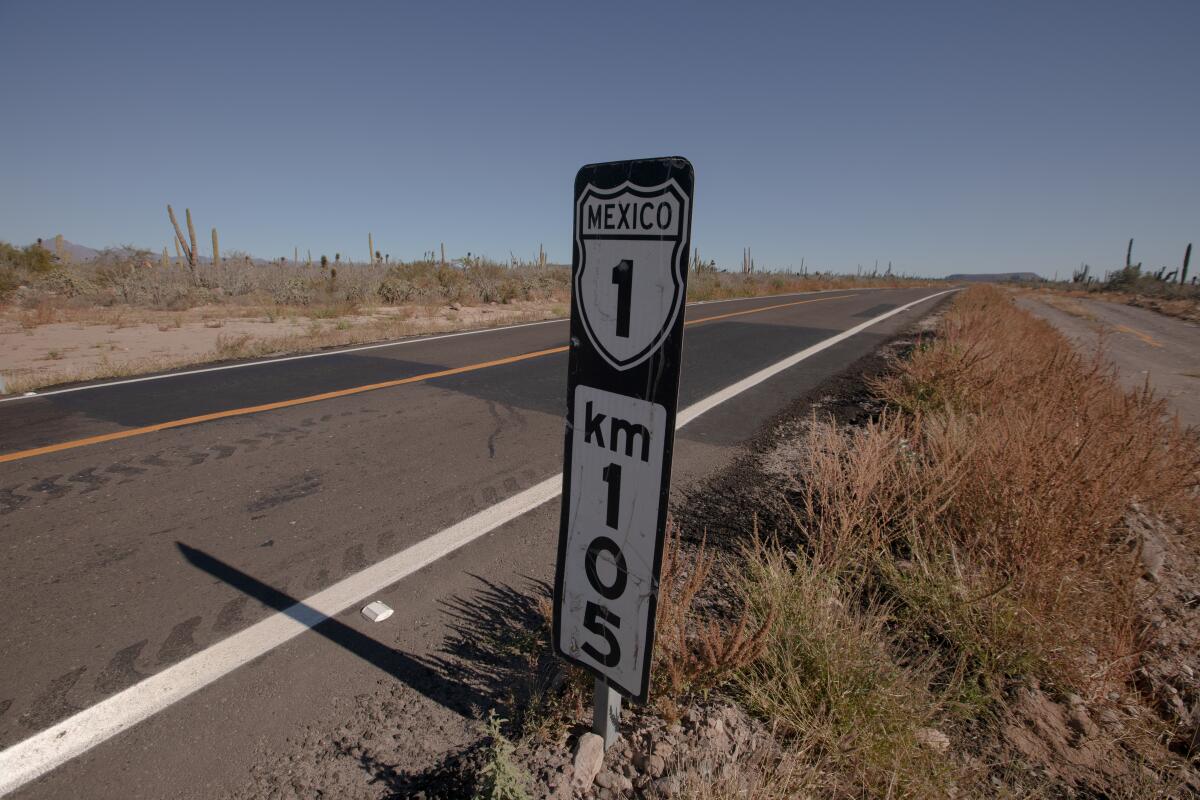
- Show more sharing options
- Copy Link URL Copied!
Homework is vital before travel in Baja California, especially if you’re considering a road trip.
Questions over Americans’ safety in Mexico have been underlined by the mid-January death of Orange County public defender Elliot Blair, who suffered unexplained head injuries at a Rosarito Beach resort; and by the early March shooting deaths of two Americans and one Mexican in an apparently botched kidnapping in Matamoros, 1,570 miles east of Tijuana.
Here’s a rundown of sources I consulted and factors I weighed before my eight-day drive to Cabo San Lucas in early January.
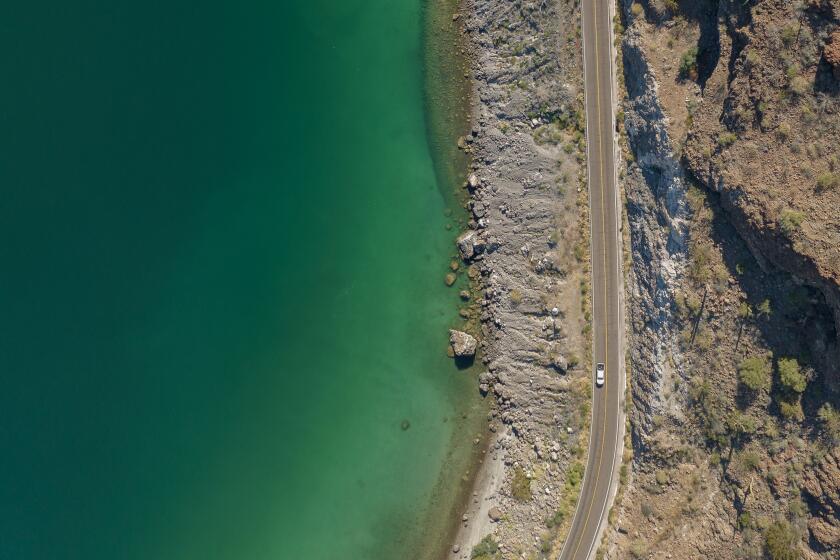
Travel & Experiences

Joshua Tree with beaches and taquerias? No, just an epic Baja road trip
On a drive down the Baja peninsula’s Highway 1, travel writer Christopher Reynolds finds baby whales, a pond to float in and a new generation of adventurers.
March 15, 2023
Overall safety
The U.S. State Department classifies Mexico’s states in four ways for would-be travelers. The most severe advice is “do not travel,” which currently covers the states of Colima, Guerrero, Michoacán, Sinaloa, Zacatecas and Tamaulipas (which includes Matamoros) on Mexico’s east coast.
The state of Baja California is in the second most severe category — “reconsider travel” — because of crime and kidnapping, especially homicides in the non-tourist areas of Tijuana. The State Department urges those who do travel to remain on main highways. The State Department also puts the states of Chihuahua, Durango, Jalisco, Morelos, Sonora and Guanajuato (the latter includes San Miguel de Allende) in that category.
The state of Baja California Sur, which begins about 450 miles south of the U.S. border, is in the State Department’s less extreme “exercise increased caution” category.
Canada’s government urges Canadians to “exercise a high degree of caution” in Mexico.
The website elcri.men , which summarizes and analyzes Mexican crime statistics, said Baja California had the third-highest homicide rate among Mexican states in 2022, in large part because of Tijuana. By the same measure, Baja California Sur had the fourth-lowest rate among Mexican states.
If studying up on conditions in the Baja peninsula makes you or your companions uncomfortable, stay away. Even if nothing goes wrong, feeling unsafe can ruin a trip. (I didn’t drive the peninsula with my family; I drove it with two people who felt comfortable with it.)
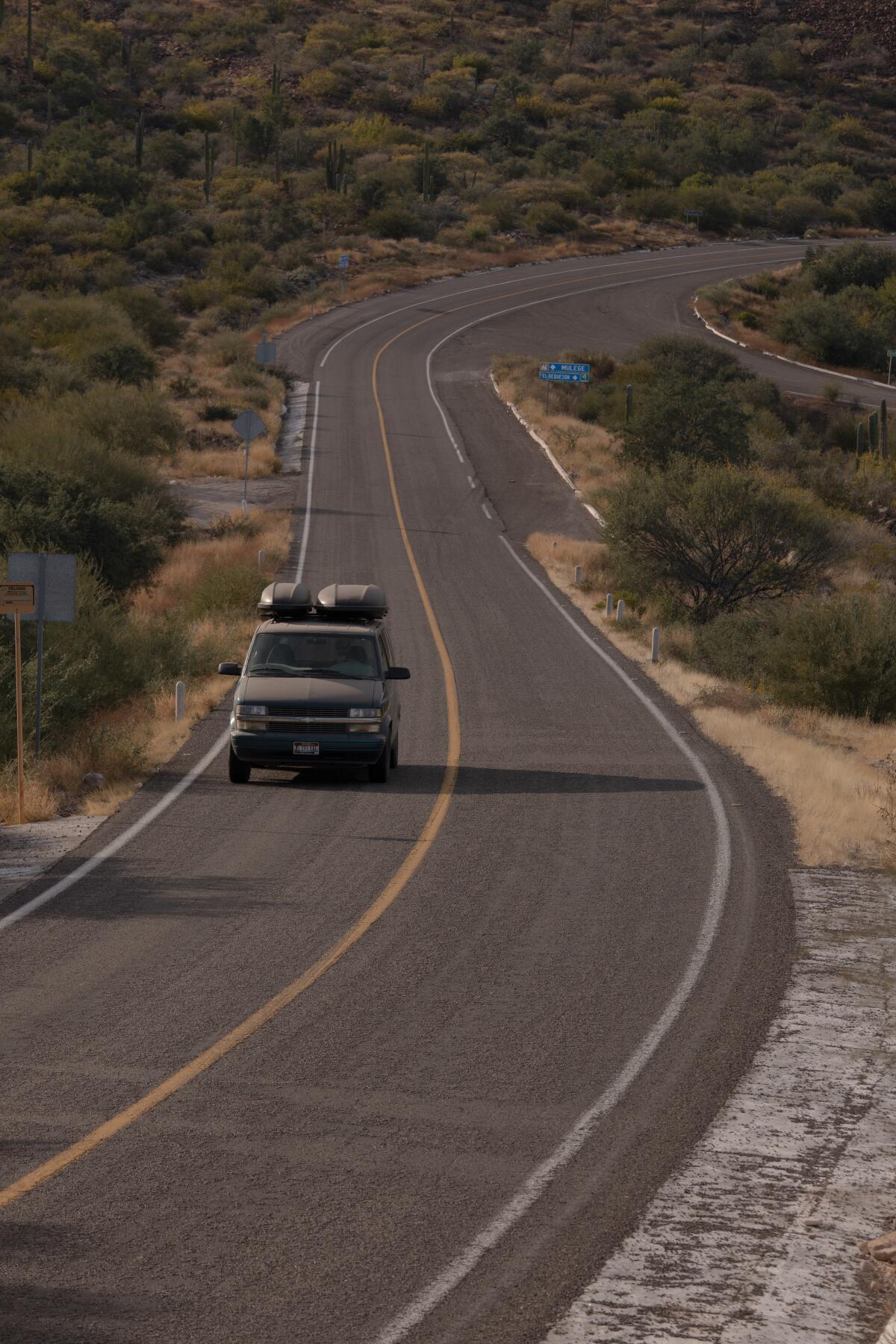
Driving in Baja
In addition to a valid driver’s license, Mexican law requires anyone driving into the country to have Mexico-specific liability insurance.
Many companies specialize in insurance for Americans driving south, offering liability policies that often cost from $10 to $40 per day. More extensive policies can double the cost but may give you more peace of mind. Vendors include AAA , Allstate , Bajabound.com , Baja-mex.com , Discoverbaja.com, Geico and Mexpro.com .
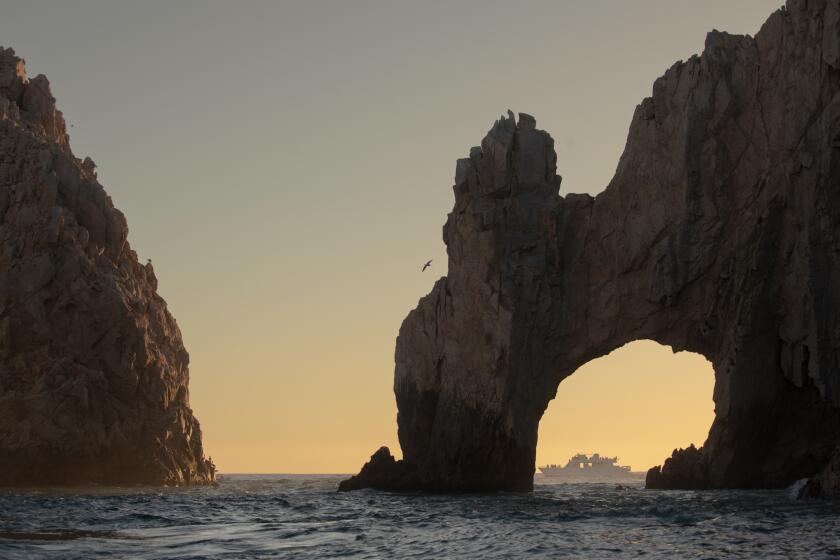
25 restaurants, hotels and hidden wonders along the Baja Highway
Cave paintings. Missions. A lagoon where gray whales gather. Whether you’re taking on the whole highway or targeting one stretch, the landscape is full of revelations.
All authorities agree that driving at night in rural Baja is dangerous because of the many roaming livestock. In addition, drivers should be ready for long, narrow stretches of two-lane blacktop without shoulders or turnouts.
Two other things: Drunk driving is just as illegal in Baja California and Baja California Sur as it is in California. Also, it’s illegal to enter Mexico with a gun without written authorization in advance from Mexican authorities.
More driving tips:
- Occasionally drivers in Tijuana, Rosarito Beach and Ensenada are pulled over after an alleged infraction and offered a chance to pay a fine at the police station or on the spot. Don’t argue or pay on the spot, many Baja veterans say. Instead, they say, the best response is to ask for a written citation and agree to pay the citation at the police station or by mail (or challenge it) . An additional option: calling Baja California’s bilingual Tourist Assistance Hotline (078, around the clock) from any cellphone with roaming privileges in Baja.
- Police checkpoints are placed every few hundred miles along the peninsula. Officers typically ask drivers where they have come from and where they’re going. We went through about six checkpoints, the conversation never lasting more than one or two minutes.
- Many roads to scenic spots are dirt, not blacktop, and best handled by vehicles with four-wheel drive and high clearance.
- The peninsula is so big that most travelers choose to explore selected portions. Many travelers fly to Los Cabos, La Paz or Loreto, rent a car at the airport, drive a loop and return the car where they began. Picking up and dropping off a rental car in different locations is possible in Baja but can double the cost. Topoterra is the only company I could find that would rent me a vehicle in San Diego and let me drop it off (for a fee) in Los Cabos.
- In Baja (and all of Mexico) distances are measured in kilometers, gas is sold by the liter (and usually pumped by an attendant) and speed bumps ( topes ) pop up in some urban areas. Gas prices in Baja have lately fluctuated around 22 pesos per liter (about $4.50 per gallon) and are often cheaper than in California.
- Beyond the Pemex station in El Rosario there isn’t another gas station until Villa Jesús María (just north of Guerrero Negro), 200 miles south.
- More detailed advice is offered by the Automobile Club of Southern California , Bajabound, AllAboutBaja.com and other sources.
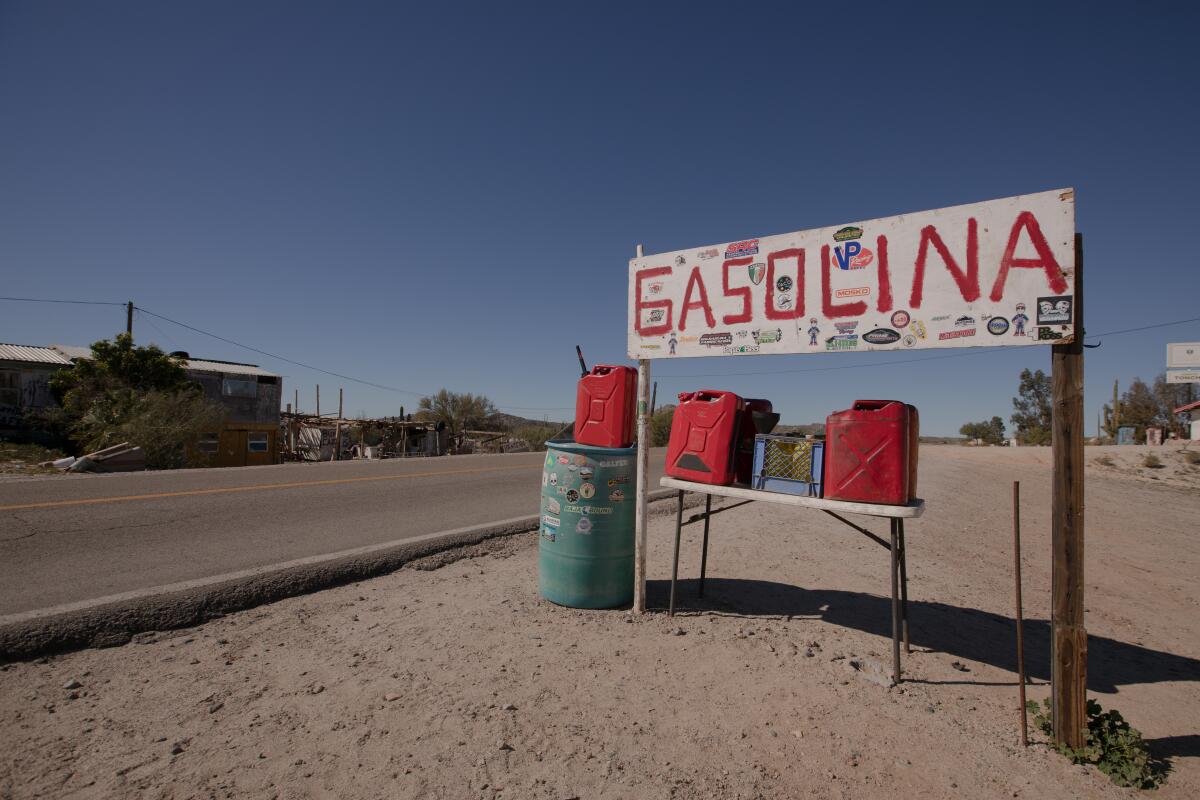
Communication and laws
Southbound travelers must show a passport or passport card and are required to get an FMM tourist permit online or in person from Mexican immigration officials at the border. For trips of more than seven days, the cost is about $36 (687 pesos).
The more Spanish you speak, the better. If you’re hoping to camp on ranch land, the best preparation may be hiring a local guide who can help get you permission.
To ease web access and communication with the U.S., many regular winter visitors to Baja use Starlink , which for $599 up front and $135 monthly allows a road-tripper or RV driver to access the internet from just about anywhere in Baja.
More to Read

The 101 best West Coast experiences
May 16, 2024
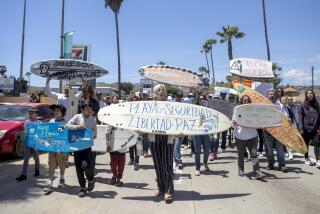
3 bodies in Mexican well identified as Australian and American surfers killed for tires
May 5, 2024

Bodies found in Baja California during search for missing tourists, Mexican officials say
May 4, 2024
Sign up for The Wild
We’ll help you find the best places to hike, bike and run, as well as the perfect silent spots for meditation and yoga.
You may occasionally receive promotional content from the Los Angeles Times.

Born and raised in California, Christopher Reynolds has written about travel, the outdoors, arts and culture for the Los Angeles Times since 1990.
More From the Los Angeles Times

World & Nation
Bitter political fight in Bolivia is paralyzing the government
June 23, 2024
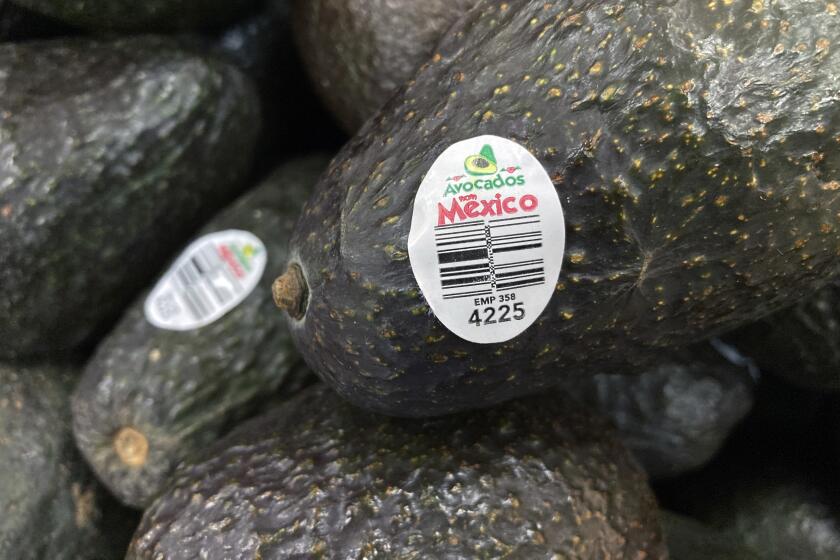
U.S. says avocado inspections may resume in troubled Mexican state, opening way for imports
June 21, 2024
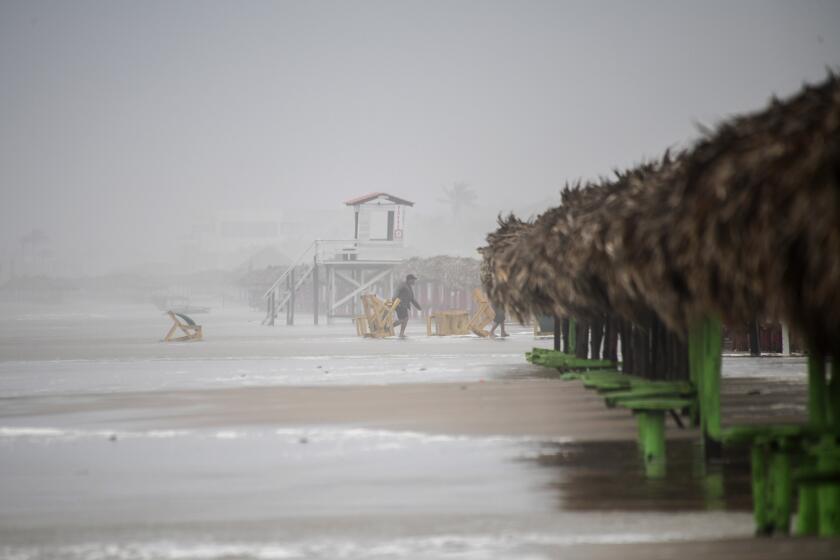
Alberto today, Beryl tomorrow. Will the next big storm have your name?
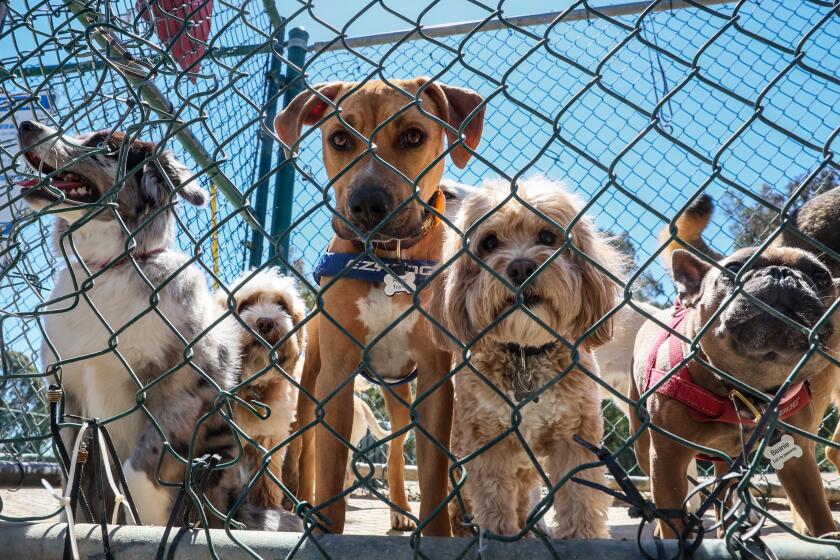
Adopting a dog? It helps to do some homework first
Security Alert May 17, 2024
Worldwide caution, update may 10, 2024, information for u.s. citizens in the middle east.
- Travel Advisories |
- Contact Us |
- MyTravelGov |
Find U.S. Embassies & Consulates
Travel.state.gov, congressional liaison, special issuance agency, u.s. passports, international travel, intercountry adoption, international parental child abduction, records and authentications, popular links, travel advisories, mytravelgov, stay connected, legal resources, legal information, info for u.s. law enforcement, replace or certify documents.
Before You Go
Learn About Your Destination
While Abroad
Emergencies
Share this page:
Travel Advisory August 22, 2023
Mexico - see state summaries.
Reissued after periodic review with general security updates, and the removal of obsolete COVID-19 page links.
Country Summary: Violent crime – such as homicide, kidnapping, carjacking, and robbery – is widespread and common in Mexico. The U.S. government has limited ability to provide emergency services to U.S. citizens in many areas of Mexico, as travel by U.S. government employees to certain areas is prohibited or restricted. In many states, local emergency services are limited outside the state capital or major cities.
U.S. citizens are advised to adhere to restrictions on U.S. government employee travel. State-specific restrictions are included in the individual state advisories below. U.S. government employees may not travel between cities after dark, may not hail taxis on the street, and must rely on dispatched vehicles, including app-based services like Uber, and regulated taxi stands. U.S. government employees should avoid traveling alone, especially in remote areas. U.S. government employees may not drive from the U.S.-Mexico border to or from the interior parts of Mexico, except daytime travel within Baja California and between Nogales and Hermosillo on Mexican Federal Highway 15D, and between Nuevo Laredo and Monterrey on Highway 85D.
Read the country information page for additional information on travel to Mexico.
Do Not Travel To:
- Colima state due to crime and kidnapping .
- Guerrero state due to crime .
- Michoacan state due to crime and kidnapping .
- Sinaloa state due to crime and kidnapping
- Tamaulipas state due to crime and kidnapping.
- Zacatecas state due to crime and kidnapping .
Reconsider Travel To:
- Baja California state due to crime and kidnapping .
- Chihuahua state due to crime and kidnapping .
- Durango state due to crime .
- Guanajuato state due to crime and kidnapping .
- Jalisco state due to crime and kidnapping .
- Morelos state due to crime .
- Sonora state due to crime and kidnapping .
Exercise Increased Caution When Traveling To:
- Aguascalientes state due to crime .
- Baja California Sur state due to crime .
- Chiapas state due to crime .
- Coahuila state due to crime .
- Hidalgo state due to crime .
- Mexico City due to crime .
- Mexico State due to crime .
- Nayarit state due to crime.
- Nuevo Leon state due to crime and kidnapping .
- Oaxaca state due to crime .
- Puebla state due to crime and kidnapping .
- Queretaro state due to crime .
- Quintana Roo state due to crime .
- San Luis Potosi state due to crime and kidnapping .
- Tabasco state due to crime .
- Tlaxcala state due to crime .
- Veracruz state due to crime .
Exercise Normal Precautions When Traveling To:
- Campeche state
- Yucatan state
Visit our website for Travel to High-Risk Areas .
If you decide to travel to Mexico:
- Keep traveling companions and family back home informed of your travel plans. If separating from your travel group, send a friend your GPS location. If taking a taxi alone, take a photo of the taxi number and/or license plate and text it to a friend.
- Use toll roads when possible and avoid driving alone or at night. In many states, police presence and emergency services are extremely limited outside the state capital or major cities.
- Exercise increased caution when visiting local bars, nightclubs, and casinos.
- Do not display signs of wealth, such as wearing expensive watches or jewelry.
- Be extra vigilant when visiting banks or ATMs.
- Enroll in the Smart Traveler Enrollment Program (STEP) to receive Alerts and make it easier to locate you in an emergency.
- Follow the Department of State on Facebook and Twitter .
- Follow the U.S. Embassy on Facebook and Twitter .
- Review the Country Security Report for Mexico.
- Mariners planning travel to Mexico should check for U.S. maritime advisories and alerts , which include instructions on reporting suspicious activities and attacks to Mexican naval authorities.
- Prepare a contingency plan for emergency situations. Review the Traveler’s Checklist .
- Visit the CDC page for the latest travel health information related to your travel.
Aguascalientes state – Exercise Increased Caution
Exercise increased caution due to crime.
Criminal activity and violence may occur throughout the state.
There are no restrictions on travel for U.S. government employees in Aguascalientes state.
Baja California state – Reconsider Travel
Reconsider travel due to crime and kidnapping.
Transnational criminal organizations compete in the border area to establish narco-trafficking and human smuggling routes. Violent crime and gang activity are common. Travelers should remain on main highways and avoid remote locations. Of particular concern is the high number of homicides in the non-tourist areas of Tijuana. Most homicides appeared to be targeted; however, criminal organization assassinations and territorial disputes can result in bystanders being injured or killed. U.S. citizens and LPRs have been victims of kidnapping.
U.S. government employees must adhere to the noted restrictions:
- Mexicali Valley: U.S. government employees should avoid the Mexicali Valley due to the heightened possibility of violence between rival cartel factions. The boundaries of the restricted area are: to the east, the Baja California/Arizona and Baja California/Sonora borders; to the south, from La Ventana (on Highway 5) due east to the Colorado River; to the west, Highway 5; and to the north, Boulevard Lazaro Cardenas/Highway 92/Highway 1 to Carretera Aeropuerto, from the intersection of Highway 1 and Carretera Aeropuerto due north to the Baja California/California border, and from that point eastward along the Baja California/California border.
- Travelers may use Highways 2 and 2D to transit between Mexicali, Los Algodones, and San Luis Rio Colorado during daylight hours. Travelers may also use Highways 1 and 8 to transit to and from the Mexicali Airport during daylight hours. Travel on Highway 5 is permissible during daylight hours.
There are no other travel restrictions for U.S. government employees in Baja California state. These include high-traffic tourism areas of border and coastal communities, such as Tijuana , Ensenada , and Rosarito .
Baja California Sur state – Exercise Increased Caution
There are no restrictions on travel for U.S. government employees in Baja California Sur state.
Campeche state – Exercise Normal Precautions
Exercise normal precautions.
There are no restrictions on travel for U.S. government employees in Campeche state.
Chiapas state – Exercise Increased Caution
There are no restrictions on travel for U.S. government employees in Chiapas state.
Chihuahua state – Reconsider Travel
Violent crime and gang activity are common. Most homicides are targeted assassinations against members of criminal organizations. Battles for territory between criminal groups have resulted in violent crime in areas frequented by U.S. citizens and U.S. government employees, including restaurants and malls during daylight hours. Bystanders have been injured or killed in shooting incidents. U.S. citizens and LPRs have been victims of kidnapping.
U.S. government employee travel is limited to the following areas with the noted restrictions:
- Ciudad Juarez: U.S. government employees may travel to the area of Ciudad Juarez bounded to the east by Bulevar Independencia; to the south by De los Montes Urales/Avenida Manuel J Clouthier/Carretera de Juárez; to the west by Via Juan Gabriel/Avenida de los Insurgentes/Calle Miguel Ahumada/Francisco Javier Mina/Melchor Ocampo; and to the north by the U.S.-Mexico border. Direct travel to the Ciudad Juarez airport (officially called the Abraham González International Airport) and the factories located along Bulevar Independencia and Las Torres is permitted. Travel to San Jerónimo is permitted only through the United States via the Santa Teresa U.S. Port of Entry; travel via Anapra is prohibited.
U.S. government employees may only travel from Ciudad Juarez to the city of Chihuahua during daylight hours via Federal Highway 45, with stops permitted only at the Guardia Nacional División Caminos station, the Umbral del Milenio overlook area, the border inspection station at KM 35, and the shops and restaurants on Federal Highway 45 in the city of Ahumada.
- U.S. government employees may travel between Ciudad Juarez and Ascension via Highway 2.
- Nuevo Casas Grandes Area (including Nuevo Casas Grandes, Casas Grandes, Mata Ortiz, Colonia Juárez, Colonia LeBaron, Paquimé and San Buenaventura): U.S. government employees may travel to the Nuevo Casas Grandes area during daylight hours via Mexico Federal Highway 2, and subsequently Federal Highway 10, to Nuevo Casas Grandes. Employees are permitted to stay overnight in the cities of Nuevo Casas Grandes and Casas Grandes only.
- City of Chihuahua: U.S. government employees may travel at any time to the area of the city of Chihuahua bounded to the north by Avenida Transformación; to the east by Avenida Tecnológico/Manuel Gómez Morín/Highway 16/Blvd.José Fuentes Mares; to the west by the city boundary; and to the south by Periférico Francisco R. Almada.
- U.S. government employees may travel on Highways 45, 16, and 45D through the city of Chihuahua and to the Chihuahua airport (officially called the General Roberto Fierro Villalobos International Airport).
- U.S. government employees may travel to Santa Eulalia to the east of the city of Chihuahua, as well as to Juan Aldama via Highway 16 to the northeast.
- U.S. government employees may travel south of the city of Chihuahua on Highway 45 to the southern boundary of Parral, including each town directly connected to Highway 45, including Lázaro Cárdenas, Pedro Meoqui, Santa Cruz de Rosales, Delicias, Camargo, Ciudad Jiménez, and Parral itself.
- U.S. government employees may only travel on official business from the city of Chihuahua on Highway 16 to Ciudad Cuauhtémoc bounded by Highway 21 to the north and east, Highway 5 to the west, and Bulevar Jorge Castillo Cabrera to the south.
- Ojinaga: U.S. government employees must travel to Ojinaga via U.S. Highway 67 and enter through the U.S. Port of Entry in Presidio, Texas.
- Palomas: U.S. government employees may travel to Palomas via U.S. highways through the U.S. Port of Entry in Columbus, New Mexico, or via Highway 2 in Mexico.
U.S. government employees may not travel to other areas of Chihuahua, including Copper Canyon .
Coahuila state – Exercise Increased Caution
Violent crime and gang activity occur in parts of Coahuila state.
U.S. government employees must adhere to the following travel restrictions:
- Zaragoza, Morelos, Allende, Nava, Jimenez, Villa Union, Guerrero, and Hidalgo municipalities : U.S. government employees may not travel to these municipalities.
- Piedras Negras and Ciudad Acuña: U.S. government employees must travel directly from the United States and observe a curfew from midnight to 6:00 a.m. in both cities.
There are no other restrictions on travel for U.S. government employees in Coahuila state.
Colima state – Do Not Travel
Do not travel due to crime and kidnapping.
Violent crime and gang activity are widespread. Most homicides are targeted assassinations against members of criminal organizations. Shooting incidents between criminal groups have injured or killed bystanders. U.S. citizens and LPRs have been victims of kidnapping.
Travel for U.S. government employees is limited to the following areas with noted restrictions:
- Manzanillo: U.S. government employee travel is limited to the tourist and port areas of Manzanillo.
- Employees traveling to Manzanillo from Guadalajara must use Federal Toll Road 54D during daylight hours.
U.S. government employees may not travel to other areas of Colima state.
Durango state – Reconsider Travel
Reconsider travel due to crime.
Violent crime and gang activity are common in parts of Durango state.
- West and south of Federal Highway 45: U.S. government employees may not travel to this region of Durango state.
There are no other restrictions on travel for U.S. government employees in Durango state.
Guanajuato state – Reconsider Travel
Gang violence, often associated with the theft of petroleum and natural gas from the state oil company and other suppliers, occurs in Guanajuato, primarily in the south and central areas of the state. Of particular concern is the high number of murders in the southern region of the state associated with cartel-related violence. U.S. citizens and LPRs have been victims of kidnapping.
- Areas south of Federal Highway 45D: U.S. government employees may not travel to the area south of and including Federal Highway 45D, Celaya, Salamanca, and Irapuato.
There are no other restrictions on travel for U.S. government employees in Guanajuato state, which includes tourist areas in: San Miguel de Allende , Guanajuato City , and surrounding areas.
Guerrero state – Do Not Travel
Do not travel due to crime.
Crime and violence are widespread. Armed groups operate independently of the government in many areas of Guerrero. Members of these groups frequently maintain roadblocks and may use violence towards travelers. U.S. citizens and LPRs have been victims of kidnapping in previous years.
Travel for U.S. government employees is limited to the following area with the noted restrictions:
- Taxco: U.S. government employees must use Federal Highway 95D, which passes through Cuernavaca, Morelos, and stay within downtown tourist areas of Taxco. Employees may visit Grutas de Cacahuamilpa National Park during the day with a licensed tour operator.
U.S. government employees may not travel to other areas of the state of Guerrero, including to tourist areas in Acapulco , Zihuatanejo , and Ixtapa .
Hidalgo state – Exercise Increased Caution
There are no restrictions on travel for U.S. government employees in Hidalgo state.
Jalisco state – Reconsider Travel
Violent crime and gang activity are common in parts of Jalisco state. In Guadalajara, territorial battles between criminal groups take place in tourist areas. Shooting incidents between criminal groups have injured or killed innocent bystanders. U.S. citizens and LPRs have been victims of kidnapping.
- Jalisco-Michoacan border and Federal Highway 110: U.S. government employees may not travel to the area between Federal Highway 110 and the Jalisco-Michoacan border, nor travel on Federal Highway 110 between Tuxpan, Jalisco, and the Michoacan border.
- Federal Highway 80: U.S. government employees may not travel on Federal Highway 80 south of Cocula.
There are no other restrictions on travel for U.S government employees in Jalisco state which includes tourist areas in: Guadalajara Metropolitan Area , Puerto Vallarta (including neighboring Riviera Nayarit) , Chapala , and Ajijic .
Mexico City (Ciudad de Mexico) – Exercise Increased Caution
Both violent and non-violent crime occur throughout Mexico City. Use additional caution, particularly at night, outside of the frequented tourist areas where police and security patrol more routinely. Petty crime occurs frequently in both tourist and non-tourist areas.
There are no restrictions on travel for U.S. government employees in Mexico City.
Mexico State (Estado de Mexico) – Exercise Increased Caution
Both violent and non-violent crime occur throughout Mexico State. Use additional caution in areas outside of the frequented tourist areas, although petty crime occurs frequently in tourist areas as well.
There are no restrictions on travel for U.S. government employees in Mexico State.
Michoacan state – Do Not Travel
Do not travel due to crime and kidnapping.
Crime and violence are widespread in Michoacan state. U.S. citizens and LPRs have been victims of kidnapping.
Travel for U.S. government employees is limited to the following areas with the noted restrictions:
- Federal Highway 15D: U.S. government employees may travel on Federal Highway 15D to transit the state between Mexico City and Guadalajara.
- Morelia: U.S. government employees may travel by air and by land using Federal Highways 43 or 48D from Federal Highway 15D.
- Lazaro Cardenas: U.S. government employees must travel by air only and limit activities to the city center or port areas.
U.S. government employees may not travel to other areas of the state of Michoacan, including the portions of the Monarch Butterfly Reserve located in Michoacan.
Morelos state – Reconsider Travel
Violent crime and gang activity are common in parts of Morelos state.
There are no restrictions on travel for U.S. government employees in Morelos state.
Nayarit state – Exercise Increased Caution
Criminal activity and violence may occur throughout Nayarit state.
There are no restrictions on travel for U.S government employees in Nayarit state.
Nuevo Leon state – Exercise Increased Caution
Exercise increased caution due to crime and kidnapping.
Criminal activity and violence may occur throughout the state. U.S. citizens and LPRs have been victims of kidnapping.
There are no restrictions on travel for U.S. government employees in Nuevo Leon state.
Oaxaca state – Exercise Increased Caution
Criminal activity and violence occur throughout the state.
U.S. travelers are reminded that U.S. government employees must adhere to the following travel restrictions:
- Isthmus region: U.S. government employees may not travel to the area of Oaxaca bounded by Federal Highway 185D to the west, Federal Highway 190 to the north, and the Oaxaca-Chiapas border to the east. This includes the cities of Juchitan de Zaragoza, Salina Cruz, and San Blas Atempa.
- Federal Highway 200 northwest of Pinotepa: U.S. government employees may not use Federal Highway 200 between Pinotepa and the Oaxaca-Guerrero border.
There are no restrictions on travel for U.S. government employees to other parts of Oaxaca state, which include tourist areas in: Oaxaca City , Monte Alban , Puerto Escondido, and Huatulco .
Puebla state – Exercise Increased Caution
There are no restrictions on travel for U.S. government employees in Puebla state.
Queretaro state – Exercise Increased Caution
There are no restrictions on travel for U.S. government employees in Queretaro state.
Quintana Roo state – Exercise Increased Caution
Criminal activity and violence may occur in any location, at any time, including in popular tourist destinations. Travelers should maintain a high level of situational awareness, avoid areas where illicit activities occur, and promptly depart from potentially dangerous situations.
While not directed at tourists, shootings between rival gangs have injured innocent bystanders. Additionally, U.S. citizens have been the victims of both non-violent and violent crimes in tourist and non-tourist areas.
There are no restrictions on travel for U.S. government employees in Quintana Roo state. However, personnel are advised to exercise increased situational awareness after dark in downtown areas of Cancun, Tulum, and Playa del Carmen, and to remain in well-lit pedestrian streets and tourist zones.
San Luis Potosi state – Exercise Increased Caution
Criminal activity and violence may occur throughout the state. U.S. citizens and LPRs have been victims of kidnapping.
There are no restrictions on travel for U.S. government employees in San Luis Potosi state.
Sinaloa state – Do Not Travel
Violent crime is widespread. Criminal organizations are based in and operating in Sinaloa. U.S. citizens and LPRs have been victims of kidnapping.
- Mazatlan: U.S. government employees may travel to Mazatlan by air or sea only, are limited to the Zona Dorada and historic town center, and must travel via direct routes between these destinations and the airport and sea terminal.
- Los Mochis and Topolobampo: U.S. government employees may travel to Los Mochis and Topolobampo by air or sea only, are restricted to the city and the port, and must travel via direct routes between these destinations and the airport.
U.S. government employees may not travel to other areas of Sinaloa state.
Sonora state – Reconsider Travel
Sonora is a key location used by the international drug trade and human trafficking networks. Violent crime is widespread. U.S. citizens and LPRs have been victims of kidnapping. Travelers should maintain a heightened level of awareness of their surroundings in all their travels in Sonora. Security incidents may occur in any area of Sonora.
- Travel between Hermosillo and Nogales: U.S. government employees may travel between the U.S. Ports of Entry in Nogales and Hermosillo during daylight hours via Federal Highway 15 only. U.S. government employees may not use ANY taxi services, public buses, nor ride-share applications due to a lack of secure vetting and/or dispatching procedures. Travelers should exercise caution and avoid unnecessary stops as security incidents, including sporadic, armed carjackings, and shootings have been reported along this highway during daylight hours. Travelers should have a full tank of gas and inform friends or family members of their planned travel.
- Nogales: U.S. government employees may not travel in the triangular area north of Avenida Tecnologico, west of Bulevar Luis Donaldo Colosio (Periferico), nor east of Federal Highway 15D (Corredor Fiscal). U.S. government employees also may not travel in the residential and business areas to east of the railroad tracks along Plutarco Elias Calle (HWY 15) and Calle Ruiz Cortino, including the business area around the Morley pedestrian gate port-of-entry. U.S. government employees may not use ANY taxi services, public buses, nor ride-share applications in Nogales due to a lack of secure vetting and/or dispatching procedures and the danger of kidnapping and other violent crimes.
- Puerto Peñasco: U.S. government employees may travel between Puerto Peñasco and the Lukeville-Sonoyta U.S. Port of Entry during daylight hours via Federal Highway 8 only. They may not travel on any other route to Puerto Peñasco. U.S. government employees may not use ANY taxi services, public buses, nor ride-share applications in Puerto Peñasco. due to a lack of secure vetting and/or dispatching procedures and the danger of kidnapping and other violent crimes.
- Triangular region near Mariposa U.S. Port of Entry: U.S. government employees may not travel into or through the triangular region west of the Mariposa U.S. Port of Entry, east of Sonoyta, and north of Altar municipality.
- San Luis Rio Colorado, Cananea, and Agua Prieta : U.S. government employees may travel directly from the nearest U.S. Port of Entry to San Luis Rio Colorado, Cananea (via Douglas Port of Entry), and Agua Prieta, but may not go beyond the city limits. Travel is limited to daylight hours only. Travel between Nogales and Cananea via Imuris is not permitted. U.S. government employees may not use ANY taxi services, public buses, nor ride-share applications in these cities due to a lack of secure vetting and/or dispatching procedures and the danger of kidnapping and other violent crimes.
- Eastern and southern Sonora (including San Carlos Nuevo Guaymas and Alamos): U.S. government employees may not travel to areas of Sonora east of Federal Highway 17, the road between Moctezuma and Sahuaripa, and State Highway 20 between Sahuaripa and the intersection with Federal Highway 16. U.S. government employees may travel to San Carlos Nuevo Guaymas and Alamos; travel to Alamos is only permitted by air and within city limits. U.S. government employees may not travel to areas of Sonora south of Federal Highway 16 and east of Federal Highway 15 (south of Hermosillo), as well as all points south of Guaymas, including Empalme, Guaymas, Obregon, and Navojoa. U.S. government employees may not use ANY taxi services, public buses, nor ride-share applications in these areas due to a lack of secure vetting and/or dispatching procedures and the danger of kidnapping and other violent crimes.
U.S. government employees may travel to other parts of Sonora state in compliance with the above restrictions, including tourist areas in: Hermosillo , Bahia de Kino , and Puerto Penasco .
Tabasco state – Exercise Increased Caution
There are no restrictions on travel for U.S. government employees in Tabasco state.
Tamaulipas state – Do Not Travel
Organized crime activity – including gun battles, murder, armed robbery, carjacking, kidnapping, forced disappearances, extortion, and sexual assault – is common along the northern border and in Ciudad Victoria. Criminal groups target public and private passenger buses, as well as private automobiles traveling through Tamaulipas, often taking passengers and demanding ransom payments.
Heavily armed members of criminal groups often patrol areas of the state and operate with impunity particularly along the border region from Reynosa to Nuevo Laredo. In these areas, local law enforcement has limited capacity to respond to incidents of crime. Law enforcement capacity is greater in the tri-city area of Tampico, Ciudad Madero, and Altamira, which has a lower rate of violent criminal activity compared to the rest of the state.
U.S. citizens and LPRs have been victims of kidnapping.
- Matamoros and Nuevo Laredo: U.S. government employees may only travel within a limited radius around and between the U.S. Consulates in Nuevo Laredo and Matamoros, their homes, the respective U.S. Ports of Entry, and limited downtown sites, subject to an overnight curfew.
- Overland travel in Tamaulipas: U.S. government employees may not travel between cities in Tamaulipas using interior Mexican highways. Travel between Nuevo Laredo and Monterrey is limited to Federal Highway 85D during daylight hours with prior authorization.
U.S. government employees may not travel to other parts of Tamaulipas state.
Tlaxcala state – Exercise Increased Caution
There are no restrictions on travel for U.S. government employees in Tlaxcala state.
Veracruz state – Exercise Increased Caution
Violent crime and gang activity occur with increasing frequency in Veracruz, particularly in the center and south near Cordoba and Coatzacoalcos. While most gang-related violence is targeted, violence perpetrated by criminal organizations can affect bystanders. Impromptu roadblocks requiring payment to pass are common.
There are no restrictions on travel for U.S. government employees in Veracruz state.
Yucatan state – Exercise Normal Precautions
There are no restrictions on travel for U.S. government employees in Yucatan state, which include tourist areas in: Chichen Itza , Merida , Uxmal , and Valladolid .
Zacatecas state – Do Not Travel
Violent crime, extortion, and gang activity are widespread in Zacatecas state. U.S. citizens and LPRs have been victims of kidnapping.
- Zacatecas City : U.S. government employee travel is limited to Zacatecas City proper, and employees may not travel overland to Zacatecas City.
- U.S. government employees may not travel to other areas of Zacatecas state.
Embassy Messages
View Alerts and Messages Archive
Quick Facts
Passport must be valid at time of entry
One page per stamp
Yes, if visiting for more than 180 days
See Travelers’ Health section
Embassies and Consulates
EMERGENCY ASSISTANCE FOR U.S. CITIZENS IN MEXICO From Mexico: 800-681-9374 or 55-8526-2561 From the United States: 1-844-528-6611
U.S. Citizen Services Inquiries: Contact Form
U.S. Embassy Mexico City
Paseo de la Reforma 305 Colonia Cuauhtémoc 06500 Ciudad de México
U.S. Consulate General Ciudad Juarez
Paseo de la Victoria #3650 Fracc. Partido Senecú 32543 Ciudad Juárez, Chihuahua
U.S. Consulate General Guadalajara
Progreso 175 Colonia Americana 44160 Guadalajara, Jalisco
U.S. Consulate General Hermosillo
Monterey, Esqueda 141 El Centenario 83260 Hermosillo, Sonora
U.S. Consulate General Matamoros
Constitución No. 1 Colonia Jardín 87330 Matamoros, Tamaulipas
U.S. Consulate General Merida
Calle 60 No. 338-K x 29 y 31 Colonia Alcalá Martin 97050 Mérida, Yucatán
U.S. Consulate General Monterrey
Avenida Alfonso Reyes 150 Colonia Valle del Poniente 66196 Santa Catarina, Nuevo León
U.S. Consulate General Nogales
Calle San José s/n Fracc. Los Álamos 84065 Nogales, Sonora
U.S. Consulate General Nuevo Laredo
Paseo Colon 1901 Colonia Madero 88260 Nuevo Laredo, Tamaulipas
U.S. Consulate General Tijuana
Paseo de las Culturas s/n Mesa de Otay Delegación Centenario 22425 Tijuana, Baja California
Consular Agencies
Acapulco Hotel Continental Emporio Costera M. Alemán 121 – Office 14 39670 Acapulco, Guerrero Cancun
Blvd. Kukulcan Km 13 ZH Torre La Europea, Despacho 301 77500 Cancún, Quintana Roo
Los Cabos Las Tiendas de Palmilla L-B221, Km. 27.5 Carretera Transpeninsular 23406 San José del Cabo, Baja California Sur
Playa Gaviotas 202, Local 10 Zona Dorada 82110 Mazatlán, Sinaloa
Oaxaca Macedonio Alcalá 407, Office 20 68000 Oaxaca, Oaxaca
Piedras Negras Abasolo 211, Local 3, Centro 26000 Piedras Negras, Coahuila
Playa del Carmen Plaza Progreso, Local 33 Carretera Federal Puerto Juarez-Chetumal, Mz. 293 Lt. 1. 77710 Playa del Carmen, Quintana Roo
Puerto Vallarta
Paradise Plaza, Paseo de los Cocoteros 85 Sur, Local L-7 63732 Nuevo Nayarit, Nayarit
San Miguel de Allende Plaza La Luciérnaga, Libramiento Jose Manuel Zavala 165, Locales 4 y 5 Colonia La Luciérnaga 37745 San Miguel de Allende, Guanajuato
Destination Description
See the State Department’s Fact Sheet on Mexico for more information on U.S.-Mexico relations.
Entry, Exit and Visa Requirements
A valid passport book is required to enter Mexico by air, and those attempting to enter at an airport with a U.S. passport card only may be denied admission.
Review the Mexican government’s most current entry, exit, and visa requirements ( Spanish only ) or visit the Embassy of Mexico in Washington, D.C., for more information.
For travelers entering Mexico by air only, Mexican immigration authorities implemented a process to replace the previous paper Forma Migratoria Multiple or FMM with a Forma Migratoria Multiple Digital or FMMD. The FMMD process is in place at all 66 international airports in Mexico. Upon arrival at an airport, Mexican immigration authorities will determine a traveler’s authorized length of stay and either place a date stamp in the traveler’s passport or direct the traveler through a self-service electronic gate (E-Gate) that will generate a printed receipt with QR code. Air travelers who wish to download a record of their FMMD or find more information on the FMMD process may visit the National Migration Institute’s (INM) website .
Travelers entering Mexico by land should have a valid passport book or card. If you enter Mexico by land and plan to travel beyond the immediate border area (approximately 12 miles or 20 kilometers into Mexico), you must stop at an INM office to obtain an entry permit (Forma Migratoria Multiple or FMM), even if not explicitly directed to do so by Mexican officials. INM may opt to allow tourists entry of up to 180 days without a visa or may limit authorized stays to shorter periods at their discretion; visitors should confirm the specific length of authorized stay written on the entry permit (FMM) or by the stamp in their passport. Mexican immigration authorities could ask you to present both your passport and entry permit if applicable at any point and may detain you while they review your immigration status if you are not carrying your passport and proof of legal status in Mexico, or if you have overstayed your authorized stay. Immigration check points are common in the interior of Mexico, including in popular tourist areas far from the border.
You will also need a temporary vehicle import permit to bring a U.S.-registered vehicle beyond the border zone. These permits are processed through Banjercito and require a deposit that will be refunded once the vehicle leaves Mexico. For more information, visit the Banjercito website ( Spanish only ).
Baja California, Baja California Sur, and Sonora have a “hassle-free” zone that allows cars traveling without an entry permit or car registration within the zone.
Mexican authorities can impound a vehicle that enters the country without a valid U.S. registration, a vehicle driven by a Mexican national who is not resident in the United States, or a vehicle found beyond the border zone without the temporary import permit.
Mexican law permits Mexican immigration authorities to deny foreigners entry into Mexico if they have been charged with or convicted of a serious crime in Mexico or elsewhere.
Travelers bringing in goods beyond their personal effects worth $300.00 or more must declare those goods with Mexican customs (SAT) Mexican customs ( Spanish only ) or risk having them confiscated. This also applies to used goods or clothing, including items for donation. U.S. citizens driving such items into Mexico without declaring them or without sufficient funds to pay duty fees are subject to having their vehicle seized by Mexican customs authorities. For further information about customs regulations, please read our customs information page .
The U.S. Department of State is unaware of any HIV/AIDS entry restrictions for visitors to or foreign residents in Mexico.
A parent or legal guardian departing Mexico with minor children should carry a notarized consent letter from the other parent if traveling separately. INM requires at least one parent to complete a SAM ( Formato de Salida de Menores, Spanish only ) for all Mexican or foreign minors with Temporary Resident, Temporary Student Resident, or Permanent Resident status departing Mexico alone or with a third party. Further information about the prevention of international parental child abduction is available on our website.
Find information on dual nationality , and customs regulations on our websites. Both Mexico and the United States allow dual nationality.
Safety and Security
Travelers are urged to review the Mexico Travel Advisory for information about safety and security concerns affecting the country on a state-by-state basis.
U.S. citizens traveling to and residing in Mexico should not expect public health and safety standards like those in the United States. Even where such standards exist, enforcement varies by location. Travelers should mitigate the risk of illness or injury by taking standard health and safety precautions.
The phone number to report emergencies in Mexico is “911.” Although there may be English-speaking operators available, it is best to seek the assistance of a Spanish speaker to place the call.
Crime: Crime in Mexico occurs at a high rate and can be violent, from random street crime to cartel-related attacks. Over the past year, Mission Mexico has assisted U.S. citizens who were victims of armed robbery, carjacking, extortion, homicide, kidnapping, pick-pocketing, and sexual assault. Increased levels of cartel-related violence have resulted in territorial disputes and targeted killings, injuring or killing innocent bystanders. Travelers who find themselves in an active shooter scenario should flee in the opposite direction, if possible, or drop to the ground, preferably behind a hard barrier.
Drivers on roads and highways may encounter government checkpoints, which often include National Guard or military personnel. State and local police also set up checkpoints in and around cities and along the highways to deter criminal activity and enforce traffic laws. In some parts of Mexico, criminal organizations and other non-governmental actors have been known to erect unauthorized checkpoints and have abducted or threatened violence against those who fail to stop and/or pay a “toll.” When approaching a checkpoint, regardless of whether it is official, cooperate and avoid any actions that may appear suspicious or aggressive.
While Mexican authorities endeavor to safeguard the country’s major resort areas and tourist destinations, those areas have not been immune to the types of violence and crime experienced elsewhere in Mexico. In some areas of Mexico, response time of local police is often slow. In addition, filing police reports can be time consuming. See our Mexico Travel Advisory for more information.
Demonstrations occur frequently. They may take place in response to political or economic issues, on politically significant holidays, and during international events. Protesters in Mexico may block traffic on roads, including major thoroughfares, or take control of toll booths on highways. Travelers who encounter protesters who demand unofficial tolls are generally allowed to pass upon payment. U.S. citizens should avoid participating in demonstrations or other activities that might be deemed political by authorities, as Mexican law prohibits political activities by foreign citizens and such actions may result in detention or deportation.
- Demonstrations can be unpredictable, avoid areas around protests and demonstrations.
- Past demonstrations have turned violent.
- Check local media for updates and traffic advisories.
International Financial Scams: See the Department of State and the FBI pages for information.
Internet romance and financial scams are prevalent in Mexico. Scams are often initiated through Internet postings/profiles or by unsolicited emails and letters. Scammers almost always pose as U.S. citizens who have no one else to turn to for help. Common scams include:
- Romance/Online dating
- Money transfers
- Lucrative sales
- Grandparent/Relative targeting
- Free Trip/Luggage
- Inheritance notices
- Bank overpayments
Mexico’s consumer protection agency, PROFECO (Procuraduría Federal del Consumidor, Spanish only), can sometimes provide assistance (Spanish only) to victims of such scams. In addition, there have been allegations of banking fraud perpetrated by private bankers against U.S. citizens. U.S. citizens who believe they have been victims of fraud can file a police report file a complaint (Spanish only) with the Mexican banking regulatory agency, CONDUSEF (Comision Nacional para la Proteccion y Defensa de los Usuarios de Servicios Financieros, Spanish only), or consult with an attorney.
Victims of Crime: U.S. victims of sexual assault are encouraged to contact the U.S. Embassy or nearest Consulate for assistance. Report emergencies to the local police at 911, report crimes already committed to the Ministerio Publico, and contact the Embassy or Consulate at +52-55-85262561. Remember that local authorities are responsible for investigating and prosecuting crimes.
U.S. citizen victims of crime should contact the local authorities to file a Mexican police report before departing Mexico. In most instances, victims of crime will file reports with the Ministerio Publico (equivalent to the office of public prosecutor or district attorney in the United States) and not with police first responders. U.S. citizens should also inform the U.S. Embassy or nearest consulat e .
See our webpage on help for U.S. victims of crime overseas . We can:
- help you find appropriate medical care,
- assist you in reporting a crime to the police,
- contact relatives or friends with your written consent,
- provide general information regarding the victim’s role during the local investigation and following its conclusion,
- provide a list of local attorneys,
- provide information on victim’s compensation programs in the United States ,
- provide an emergency loan for repatriation to the United States and/or limited medical support in cases of destitution,
- help you find accommodation and arrange flights home,
- replace a stolen or lost passport.
Domestic Violence: U.S. citizen victims of domestic violence are encouraged to contact the U.S. Embassy or nearest consulate for assistance.
Kidnapping: Mexico experiences very high rates of kidnapping. If you believe you or your U.S. citizen or Lawful Permanent Resident (LPR) relative has been kidnapped, please contact the U.S. Embassy or nearest consulate immediately.
Robbery: Mexico experiences robberies, typically in cities, in which abductors force victims to use their debit or credit card to withdraw money from ATMs in exchange for their release. Perpetrators commonly work in cooperation with, or pose as, taxi drivers. To minimize the risk of such robberies:
- Only use a reputable taxi company or a trusted ride-sharing app.
- Book taxis through your hotel or an authorized taxi stand.
Extortion: Extortion schemes are common in Mexico. In a typical scheme known as a virtual kidnapping, criminals convince family members that a relative has been abducted, when, in fact, the person is safe but unreachable. The purported abductors will often use threats to persuade victims to isolate themselves, making communication with family members less likely. Unable to reach their loved ones, family members often consent to paying the “ransom” demand. Criminals use various means to gather information about potential victims, including monitoring social media sites, eavesdropping on conversations, or using information taken from a stolen cell phone. Some of these extortions have been conducted from Mexican prisons. You can reduce the risk of falling victim to this type of extortion through the following:
- Do not discuss travel plans, your room number, or any other personal information within earshot of strangers.
- Do not divulge personal business details to strangers in person or over the phone, especially when using hotel phones.
- If you are threatened on the phone, hang up immediately.
Sexual Assault: Rape and sexual assault are serious problems in some resort areas. Many of these incidents occur at night or during the early morning hours, in hotel rooms, on hotel grounds, or on deserted beaches. In some cases, assailants drug the drinks of victims before assaulting them. Pay attention to your surroundings and to who might have handled your drink.
Credit/Debit Card “Skimming:” There have been instances of fraudulent charges or withdrawals from accounts due to “skimmed” cards. If you choose to use credit or debit cards, you should regularly check your account to ensure there are no unauthorized transactions. Travelers should limit the amount of cash they carry in public, exercise caution when withdrawing cash from ATMs, and avoid ATMs located in isolated or unlit areas.
Alcohol: If you choose to drink alcohol, it is important to do so in moderation and to stop and seek medical attention if you begin to feel ill. There have been reports of individuals falling ill or blacking out after consuming unregulated alcohol. The Mexican Federal Commission for the Protection against Sanitary Risk, COFEPRIS ( Comision Federal para la Proteccion contra Riesgos Sanitarios, Spanish only ), is responsible for inspecting hotels, restaurants, and other establishments for health violations, including reports of unregulated alcohol. Please email COFEPRIS at [email protected] for more information or if you wish to file a report. You can file a report online (Spanish only) via the COFEPRIS website, by calling the COFEPRIS call center at 800 033 50 50 (from Mexico) or +52 (55) 5080-5425 (from the United States), or by scheduling an appointment (Spanish only) to visit a COFEPRIS office.
There have also been instances of criminals drugging drinks to rob or sexually assault victims. Additionally, if you feel you have been the victim of unregulated alcohol or another serious health violation, you should notify the U.S. Embassy or nearest consulate . You may also contact the U.S. Department of State – Bureau of Consular Affairs in Washington, D.C. at 1-888-407-4747 (toll-free in the United States and Canada) or 1-202-501-4444 (from all other countries).
Drug Smuggling: Mexican criminal organizations are engaged in a violent struggle to control trafficking routes. Criminal organizations smuggling drugs into the United States have targeted unsuspecting individuals who regularly cross the border. Frequent border crossers are advised to vary their routes and travel times and to closely monitor their vehicles to avoid being targeted.
Tourism: In major cities and resort areas, the tourism industry is generally well-regulated. Best practices and safety inspections are regularly enforced. Hazardous areas and activities are identified with appropriate signage, and professional staff is typically on hand in support of organized activities. In the event of an injury, appropriate medical treatment is widely available throughout the country. Outside of a major metropolitan center, it may take more time for first responders and medical professionals to stabilize a patient and/or provide life-saving assistance. In smaller towns and areas less commonly frequented by foreign tourists, the tourism industry is unevenly regulated, and safety inspections for equipment and facilities do not commonly occur. Hazardous areas/activities are not always identified with appropriate signage, and staff may not be trained or certified either by the host government or by recognized authorities in the field. In the event of an injury, appropriate medical treatment is typically available only in or near major cities. First responders are generally unable to access areas outside of major cities to provide urgent medical treatment. U.S. citizens are encouraged to purchase medical evacuation insurance .
Since 2016, Mexico has opened seven multilingual Centers for the Care and Protection of Tourists (CAPTA) and Tourist Assistance Centers (CATTAC) in Los Cabos, La Paz, Acapulco, Playa del Carmen, Mazatlan, Ciudad Madero, and Queretaro. These offices have proven helpful assisting U.S. citizen visitors in resolving disputes with merchants and government entities, filing criminal reports, securing needed services, and locating special needs accommodations.
Local Laws & Special Circumstances
Criminal Penalties: You are subject to local laws. If you violate local laws, even unknowingly, you may be expelled, arrested, or imprisoned. Individuals establishing a business or practicing a profession that requires additional permits or licensing should seek information from the competent local authorities prior to practicing or operating a business.
Furthermore, some laws are also prosecutable in the United States, regardless of local law. For examples, see our website on crimes against minors abroad and the Department of Justice website.
Arrest Notification: If you are arrested or detained, ask police or prison officials to notify the U.S. Embassy or nearest consulate immediately. See our webpage for further information.
The Mexican government is required by international law to contact the U.S. Embassy or consulate promptly when a U.S. citizen is arrested if the arrestee so requests. This requirement does not apply to dual nationals.
Firearms and Other Weapons: Weapons laws in Mexico vary by state, but it is generally illegal for travelers to carry weapons of any kind including firearms, knives, daggers, brass knuckles, as well as ammunition (even used shells). Illegal firearms trafficking from the United States to Mexico is a major concern, and the Department of State warns all U.S. citizens against taking any firearm or ammunition into Mexico. If you are caught entering Mexico with any type of weapon, including firearms or ammunitions, you likely will face severe penalties, including prison time. U.S.-issued permits allowing an individual to carry weapons are not valid in Mexico. Visit the Department’s Traveling Abroad with Firearms webpage .
Vessels entering Mexican waters with firearms or ammunition on board must have a permit previously issued by a Mexican embassy or consulate.
Drugs: Drug possession and use, including medical marijuana, is illegal in Mexico and may result in a lengthy jail sentence or fines.
Electronic Cigarettes (Vaping Devices): It is illegal for travelers to bring electronic cigarettes (vaping devices) and all vaping solutions to Mexico. Customs will confiscate vaping devices and solutions and travelers could be fined or arrested. Avoid delays and possible sanctions by not taking these items to Mexico.
Real Estate and Time Shares: U.S. citizens should exercise caution when considering time-share investments or purchasing real estate and be aware of the aggressive tactics used by some sales representatives. Before initiating a real estate purchase or time-share investment, U.S. citizens should consult with a Mexican attorney to learn about important regulations and laws that govern real estate property.
Mountain Climbing and Hiking: The Mexican government has declared the area around the Popocatepetl and the Colima volcanoes off limits. In remote rural areas, there can be limited cell phone coverage and internet connectivity, and it may be difficult for rescue teams and local authorities to reach climbers and hikers in distress.
Potential for Natural Disasters: Mexico is in an active earthquake zone. Tsunamis may occur following significant earthquakes. Please visit our disaster and crisis preparedness webpage for more information. For additional information concerning disasters, see:
- U.S. Embassy Mexico City website
- Civil Protection ( Proteccion Civil, Spanish only ) provides information from the Mexican Government about natural disaster preparedness
- U.S. Federal Emergency Management Agency (FEMA) provides general information about natural disaster preparedness
- U.S. Geological Survey provides updates on recent seismic and volcanic activity
Storm Season: Tropical storms in the Gulf of Mexico or along the Caribbean and Pacific Coast between May and November can produce heavy winds and rain. Please visit our disaster and crisis preparedness webpage for more information.
Spring Break: Millions of U.S. citizens visit Mexican beach resorts each year, especially during “ spring break ” season. The legal drinking age in Mexico is 18. See the “Alcohol” section above to learn more about the risks associated with drinking, as well as reports of illnesses associated with the possible consumption of unregulated alcohol.
Resort Areas and Water Activities: Beaches in Mexico may be dangerous due to strong currents, rip tides, and rogue waves. Warning notices and flags on beaches should be taken seriously. Not all hazardous beaches are clearly marked. If black or red warning flags are up, do not enter the water. Strong currents can lead to dangerous conditions for even the most experienced swimmers. U.S. citizens simply walking along the shore or wading have been swept out to sea by rogue waves, and some citizens have drowned or disappeared at Mexican beaches. Avoid the consumption of alcohol while engaging in water activities and do not swim alone.
Boats used for excursions may not be covered by accident insurance and sometimes lack adequate life jackets, radios, and tools to make repairs. Participation in adventure sports may not be covered by accident insurance and safety protections and regulations for these activities may differ from U.S. standards. Visit our website and the U.S. Centers for Disease Control and Prevention website for more information about adventure travel.
Counterfeit and Pirated Goods: Although counterfeit and pirated goods are prevalent in many countries, they may still be illegal according to local laws. You may also be subject to fines or forced to relinquish the goods if you bring them back to the United States. See the U.S. Department of Justice website for more information.
Faith-Based Travelers: See the following webpages for details:
- Faith-Based Travel Information
- International Religious Freedom Report – see country reports
- Human Rights Report – see country reports
- Hajj Fact Sheet for Travelers
- Best Practices for Volunteering Abroad
LGBTQI+ Travelers: There are no legal restrictions on same-sex sexual relations or on the organization of Lesbian, Gay, Bisexual, Transgender, or Intersex (LGBTQI+) events in Mexico. However, due to sporadic reports of violence targeting LGBTQI+ individuals, U.S. citizens should exercise discretion in identifying themselves publicly as LGBTQI+. See our LGBTQI+ Travel Information page and Section 6 of the Department of State’s Human Rights Report for Mexico for further details.
Travelers with Disabilities: Mexican law prohibits discrimination against persons with physical, sensory, intellectual, or mental disabilities. Social acceptance of persons with disabilities in public is not as prevalent as in the United States. The most common types of accessibility may include accessible facilities, information, and communication/access to services/ease of movement or access. Expect accessibility to be limited in public transportation, lodging, communication/information, and general infrastructure in more rural and remote parts of the country, and more common in public transportation, lodging, communication/information, and general infrastructure in major cities. U.S. citizens with disabilities should consult individual hotels and service providers in advance of travel to ensure they are accessible.
Students: See our Students Abroad page and FBI travel tips .
Women Travelers: There were several reports of sexual assault or domestic violence involving U.S. citizen women over the past year. See our travel tips for Women Travelers .
Excellent health facilities are available in Mexico City and other major cities. Ambulance services are widely available, but training and availability of emergency responders may be below U.S. standards. Injured or seriously ill travelers may prefer to take a taxi to a health provider. Mexican facilities often require payment “up front” before providing medical care, and most hospitals in Mexico do not accept U.S. health insurance. A list of doctors and hospitals is available on the U.S. Embassy or consulate website.
U.S. citizens have lodged complaints against some private hospitals in Cancun, the Riviera Maya, and Los Cabos to include exorbitant prices and inflexible collection measures. Travelers should obtain complete information on billing, pricing, and proposed medical procedures before agreeing to any medical care in these locations. Be aware that some resorts have exclusive agreements with medical providers and ambulance services, which may limit your choices in seeking emergency medical attention. Some hospitals in tourist centers utilize sliding scales, deciding on rates for services based on negotiation and on the patient’s perceived ability to pay. In some instances, providers have been known to determine the limits of a patient’s credit card or insurance, quickly reach that amount in services rendered, and subsequently discharge the patient or transfer them to a public hospital.
Visit the U.S. Centers for Disease Control and Prevention website for information on Medical Tourism.
For emergency services in Mexico, dial 911 . Although there may be English-speaking operators available, it is best to seek the assistance of a Spanish speaker to place the call.
Ambulance services are:
- widely available in major cities but training and availability of emergency responders may be below U.S. standards,
- not present in many remote and rural areas of the country,
- not equipped with state-of-the-art medical equipment.
- Injured or seriously ill travelers may prefer to take a taxi or private vehicle to the nearest major hospital rather than wait for an ambulance.
We do not pay medical bills: Be aware that U.S. Medicare/Medicaid does not apply overseas. Most hospitals and doctors overseas do not accept U.S. health insurance.
Medical Insurance: Make sure your health insurance plan provides coverage overseas. Most care providers overseas only accept cash payments. See our webpage for more information on insurance coverage overseas. Visit the U.S. Centers for Disease Control and Prevention for more information on type of insurance you should consider before you travel overseas.
We strongly recommend supplemental insurance to cover medical evacuation as well.
Always carry your prescription medication in original packaging, along with your doctor’s prescription. Check the Mexican government’s Drug Schedule to ensure the medication is legal in Mexico.
Vaccinations: Be up-to-date on all vaccinations recommended by the U.S. Centers for Disease Control and Prevention.
Further health information :
- World Health Organization
- U.S. Centers for Disease Control and Prevention ( CDC)
Air Quality: Visit AirNow Department of State for information on air quality at U.S. Embassies and Consulates.
The U.S. Embassy maintains a list of doctors and hospitals . We do not endorse or recommend any specific medical provider or clinic.
Medical Tourism and Elective Surgery:
- U.S. citizens have suffered serious complications or died during or after having cosmetic or other elective surgery.
- Medical tourism is a rapidly growing industry. People seeking health care overseas should understand that medical systems operate differently from those in the United States and are not subject to the same rules and regulations. Anyone interested in traveling for medical purposes should consult with their local physician before traveling and visit the U.S. Centers for Disease Control and Prevention website for more information on Medical Tourism.
- We strongly recommend supplemental insurance to cover medical evacuation in the event of unforeseen medical complications.
- Your legal options in case of malpractice are very limited in Mexico. Several foreigners have successfully enlisted the support of PROFECO (Spanish only) in order to resolve disputes over medical services.
- Although Mexico has many elective/cosmetic surgery facilities that are on par with those found in the United States, the quality of care varies widely. If you plan to undergo surgery in Mexico, make sure that emergency medical facilities are available and professionals are accredited and qualified.
Pharmaceuticals
- Exercise caution when purchasing medication overseas. Pharmaceuticals, both over the counter and requiring prescription in the United States, are often readily available for purchase with little controls. Counterfeit medication is common and may prove to be ineffective, the wrong strength, or contain dangerous ingredients. Medication should be purchased in consultation with a medical professional and from reputable establishments.
- The Drug Enforcement Agency reports counterfeit prescription pills are sold by criminals on both sides of the border. These pills are sometimes represented as OxyContin, Percocet, Xanax, and others, and may contain deadly doses of fentanyl. Counterfeit pills are readily advertised on social media and can be purchased at small, non-chain pharmacies in Mexico along the border and in tourist areas. U.S. citizens have become seriously ill or died in Mexico after using synthetic drugs or adulterated prescription pills.
- U.S. Customs and Border Protection and the Food and Drug Administration are responsible for rules governing the transport of medication back to the United States. Medication purchased abroad must meet their requirements to be legally brought back into the United States. Medication should be for personal use and must be approved for usage in the United States. Please visit the U.S. Customs and Border Protection and the Food and Drug Administration websites for more information.
- Visit the Mexican Health Department website (Spanish only) or contact the Embassy of Mexico in Washington, D.C., for more information about obtaining a permit to import medicine into Mexico.
- For a list of controlled substances in Mexico, visit the COFEPRIS website (Spanish only) and the Mexican Drug Schedule (Spanish only). U.S. citizens should carry a copy of their prescription or doctor’s letter, but it is still possible that they may be subject to arrest for arriving in Mexico with substances on these lists. Note that a medicine considered “over the counter” in some U.S. states may be a controlled substance in Mexico. For example, pseudoephedrine, the active ingredient in Sudafed, is considered a controlled substance in Mexico. For more information, contact the Embassy of Mexico in Washington, D.C.
Assisted Reproductive Technology and Surrogacy
- If you are considering traveling to Mexico to have a child using assisted reproductive technology (ART) including surrogacy, visit the State Department’s ART and Surrogacy Abroad page for general information regarding U.S. citizenship for the child.
- Surrogacy in Mexico presents serious risks that must be considered before U.S. citizens begin the surrogacy process.
- If you decide to pursue parenthood in Mexico via ART with a gestational mother, be prepared for possible long delays to document your child’s birth in Mexico and their U.S. citizenship by obtaining a U.S. passport.
- Ensure you understand Mexican law, which varies by state. The only four states with a legal framework for surrogacy do not permit foreigners and/or same-sex couples to use the procedure. In the other 28 states, surrogacy is largely unregulated.
- In most states, Mexican courts may not enforce surrogacy agreements between non-Mexican or same-sex intending parents and a gestational mother should disputes arise, due to a lack of legal framework for surrogacy. The U.S. Embassy is aware of several cases where surrogacy agencies presented a partial, or false, interpretation of Mexican surrogacy laws.
- In most Mexican states, the gestational mother is the child’s legal parent with full parental rights, and the gestational mother’s name is typically listed on the Mexican state-issued birth certificate. In certain states, a court may amend the birth certificate to remove the name of the gestational mother.
- The U.S. Embassy is aware of cases of foreign nationals, including U.S. citizens, being arrested for attempting to circumvent local law related to surrogacy.
Carbon Monoxide
- Many hotels and other lodgings are not equipped with carbon monoxide detectors, even if they contain sources of this potentially lethal gas. U.S. citizens have died as a result of carbon monoxide poisoning throughout Mexico. If your lodging is not equipped with a carbon monoxide detector, consider traveling with a portable one.
Water Quality:
- In many areas in Mexico, tap water is not potable. Bottled water and beverages are safe, although you should be aware that many restaurants and hotels serve tap water unless bottled water is specifically requested. Be aware that ice for drinks might be made using tap water.
Altitude:
- Many cities in Mexico, such as Mexico City, are at high altitude, which can lead to altitude illness. Visit the U.S. Centers for Disease Control and Prevention website for more information about Travel to High Altitudes .
Adventure Travel
- Participation in adventure sports and activities may not be covered by accident insurance and safety protections and regulations for these activities may differ from U.S. standards. Visit our website and the U.S. Centers for Disease Control and Prevention website for more information about adventure travel.
General Health
The following diseases are prevalent:
- Typhoid Fever
- Travelers’ Diarrhea
- Chikungunya
- Rocky Mountain Spotted Fever
- Parasitic Infections
- Chronic Respiratory Disease
- Visit the U.S. Centers for Disease Control and Prevention website for more information about Resources for Travelers regarding specific issues in Mexico.
Air Quality
- Air pollution is a significant problem in several major cities in Mexico. Consider the impact seasonal smog and heavy particulate pollution may have on you and consult your doctor before traveling if necessary.
For further health information, go to:
- U.S. Centers for Disease Control and Prevention (CDC)
Private Residential Treatment Facilities:
- These facilities provide care to U.S. citizens throughout Mexico and include child behavior modification facilities, rehabilitation facilities, and assisted living centers.
- There is a wide range in standards for education, safety, health, sanitation, immigration, and residency. Staff licensing may not be strictly enforced or meet the standards of similar facilities in the United States.
- The State Department has received reports of abuse, negligence, or mismanagement at some of these facilities. U.S. citizens should exercise due diligence and do extensive research before selecting a residential treatment facility.
Travel and Transportation
Road Conditions and Safety: Motor vehicle accidents are a leading cause of U.S. citizen deaths in Mexico. If you have an emergency while driving, dial “911.” If you are driving on a toll highway (“ cuota ”) or any other major highway, you may contact the Green Angels ( Spanish only ), a fleet of trucks with bilingual crews, by dialing 078 from any phone in Mexico. Generally, individuals involved in an accident who do not require immediate medical care should contact their insurance providers, who may come to the site to provide an immediate assessment.
Avoid driving on Mexican highways at night. Travel with a charged and functional cell phone capable of making calls in Mexico. Travelers should exercise caution at all times and should use toll (“ cuota ”) roads rather than the less secure free (“ libre ”) roads whenever possible. Do not hitchhike or accept rides from or offer rides to strangers anywhere in Mexico. Travelers encountering police or security checkpoints should comply with instructions.
Road conditions and maintenance across Mexico vary with many road surfaces needing repair. Travel in rural areas poses additional risks to include spotty cell phone coverage and delays in receiving roadside or medical assistance.
Vehicular traffic in Mexico City is subject to restriction Monday through Saturday, according to the license plate number, in order to reduce air pollution. For additional information, refer to the Hoy No Circula website ( Spanish only ) maintained by the Mexico City government. See our Road Safety Page for more information. Also, visit Mexico’s national tourist office website , MexOnline, and Mexico’s customs website Importacion Temporal de Vehiculos ( Spanish only ) for more information regarding travel and transportation.
Traffic Laws: U.S. driver’s licenses are valid in Mexico. Mexican law requires that only owners drive their vehicles or that the owner be inside the vehicle. Failing to abide by this law may lead to impoundment and a fine equal to the value of the vehicle.
Mexican citizens who are not also U.S. citizens or LPRs may not operate U.S.-registered vehicles in Mexico. Mexican insurance is required for all vehicles, including rental vehicles. Drivers involved in accidents, even minor incidents, may be subject to arrest if they are found to be driving without proper insurance, regardless of whether they were at fault. Driving under the influence of alcohol, using a mobile device while driving, and driving through a yellow light are all illegal in Mexico.
If you drive your vehicle into Mexico beyond the immediate border area (approximately 12 miles into Mexico), you must apply for a temporary vehicle import permit with Mexican customs, Banjercito , or at some Mexican consulates in the United States. The permit requires the presentation of a valid passport and a monetary deposit that will be returned to you upon leaving Mexico before the expiration of the permit. Failing to apply for a temporary vehicle import permit may lead to impoundment and a fine equal to the value of the vehicle.
Vehicles crossing into Mexico must have a valid license plate and registration sticker. Mexican authorities will often refuse to admit vehicles with temporary or paper license plates. Vehicles with expired registration or unauthorized plates will likely be confiscated and the operator could be charged with a fine equal to the value of the vehicle.
The Mission Mexico Vehicle Recovery Unit assists with the return of stolen U.S. vehicles recovered by Mexican authorities.
If you have an emergency while driving, dial “911.” If you are driving on a toll highway (“cuota”) or any other major highway, you may contact the Green Angels (Spanish only), a fleet of trucks with bilingual crews, by dialing 078 from any phone in Mexico. Generally, individuals involved in an accident who do not require immediate medical care should contact their insurance providers, who may come to the site to provide an immediate assessment.
Public Transportation/Taxis: Security on public buses varies throughout the country but is considered a relatively safe transportation option in Mexico City and other major tourist centers. Passengers should protect their personal possessions at all times as theft is common. Intercity bus travel should be conducted during daylight hours in preferably first-class buses using toll roads.
Robberies and assaults on passengers in taxis not affiliated with a taxi stand (known as “libre” taxis) are common. Avoid taking any taxi not summoned by telephone or contacted in advance, including “libre” taxis. When in need of a taxi, telephone a radio taxi or “sitio” (regulated taxi stand) and ask the dispatcher for the driver’s name and the taxi’s license plate number. Application-based car services such as Uber and Cabify are available in many Mexican cities, and generally offer another safe alternative to taxis. Official complaints against Uber and other drivers do occur, however, and past disputes between these services and local taxi unions have occasionally turned violent, resulting in injuries to U.S. citizens in some instances.
See our Road Safety page for more information.
Aviation Safety Oversight: The U.S. Federal Aviation Administration (FAA) has assessed the Government of Mexico’s Civil Aviation Authority as not being in compliance with International Civil Aviation Organization (ICAO) aviation safety standards for oversight of Mexico’s air carrier operations. Further information may be found on the FAA safety assessment page .
Maritime Travel: Mariners planning travel to Mexico should also check for U.S. maritime advisories and alerts . Information may also be posted to the U.S. Coast Guard homeport website , and the NGA broadcast warnings .
If you enter by sea, review the Mexican boating permit requirements prior to travel or contact the Embassy of Mexico in Washington, D.C., for more information.
Maritime Safety Oversight: The Mexican maritime industry, including charter fishing and recreational vessels, is subject solely to Mexican safety regulations. Travelers should be aware that Mexican equipment and vessels may not meet U.S. safety standards or be covered by any accident insurance.
For additional travel information
- Enroll in the Smart Traveler Enrollment Program (STEP) to receive security messages and make it easier to locate you in an emergency.
- Call us in Washington, D.C. at 1-888-407-4747 (toll-free in the United States and Canada) or 1-202-501-4444 (from all other countries) from 8:00 a.m. to 8:00 p.m., Eastern Standard Time, Monday through Friday (except U.S. federal holidays).
- See the State Department’s travel website for the Worldwide Caution and Travel Advisories .
- Follow us on Twitter and Facebook .
- See traveling safely abroad for useful travel tips.
Review information about International Parental Child Abduction in Mexico . For additional IPCA-related information, please see the International Child Abduction Prevention and Return Act ( ICAPRA ) report.
Travel Advisory Levels
Assistance for u.s. citizens, learn about your destination, enroll in step.

Subscribe to get up-to-date safety and security information and help us reach you in an emergency abroad.
Recommended Web Browsers: Microsoft Edge or Google Chrome.
Check passport expiration dates carefully for all travelers! Children’s passports are issued for 5 years, adult passports for 10 years.
Afghanistan
Antigua and Barbuda
Bonaire, Sint Eustatius, and Saba
Bosnia and Herzegovina
British Virgin Islands
Burkina Faso
Burma (Myanmar)
Cayman Islands
Central African Republic
Cote d Ivoire
Curaçao
Czech Republic
Democratic Republic of the Congo
Dominican Republic
El Salvador
Equatorial Guinea
Eswatini (Swaziland)
Falkland Islands
France (includes Monaco)
French Guiana
French Polynesia
French West Indies
Guadeloupe, Martinique, Saint Martin, and Saint Barthélemy (French West Indies)
Guinea-Bissau
Isle of Man
Israel, The West Bank and Gaza
Liechtenstein
Marshall Islands
Netherlands
New Caledonia
New Zealand
North Korea (Democratic People's Republic of Korea)
Papua New Guinea
Philippines
Republic of North Macedonia
Republic of the Congo
Saint Kitts and Nevis
Saint Lucia
Saint Vincent and the Grenadines
Sao Tome and Principe
Saudi Arabia
Sierra Leone
Sint Maarten
Solomon Islands
South Africa
South Korea
South Sudan
Switzerland
The Bahamas
Timor-Leste
Trinidad and Tobago
Turkmenistan
Turks and Caicos Islands
United Arab Emirates
United Kingdom
Vatican City (Holy See)
External Link
You are about to leave travel.state.gov for an external website that is not maintained by the U.S. Department of State.
Links to external websites are provided as a convenience and should not be construed as an endorsement by the U.S. Department of State of the views or products contained therein. If you wish to remain on travel.state.gov, click the "cancel" message.
You are about to visit:
You are using an outdated browser. Upgrade your browser today or install Google Chrome Frame to better experience this site.
Mexico Traveler View
Travel health notices, vaccines and medicines, non-vaccine-preventable diseases, stay healthy and safe.
- Packing List
After Your Trip

Be aware of current health issues in Mexico. Learn how to protect yourself.
Level 1 Practice Usual Precautions
- New Global Dengue June 20, 2024 Dengue is a year-round risk in many parts of the world, with outbreaks commonly occurring every 2–5 years. Travelers to risk areas should prevent mosquito bites. Destination List: Argentina, Brazil, Burkina Faso, Cambodia, Colombia, Costa Rica, Curaçao, Ecuador, including the Galápagos Islands, Ethiopia, Fiji, French Guiana (France), Guadeloupe, Guatemala, Guyana, Honduras, Indonesia, Laos, Mali, Martinique (France), Mauritius, Mexico, Nicaragua, Panama, Paraguay, Peru, Samoa, Singapore, Sri Lanka, Sudan, Uruguay
- Rocky Mountain Spotted Fever in Mexico March 12, 2024 There have been reports of Rocky Mountain spotted fever (RMSF) in people traveling to the United States from Tecate, in the state of Baja California, Mexico.
- Salmonella Newport in Mexico March 29, 2023 Some travelers who have spent time in Mexico have been infected with multidrug-resistant (MDR) Salmonella Newport.
⇧ Top
Check the vaccines and medicines list and visit your doctor at least a month before your trip to get vaccines or medicines you may need. If you or your doctor need help finding a location that provides certain vaccines or medicines, visit the Find a Clinic page.
Routine vaccines
Recommendations.
Make sure you are up-to-date on all routine vaccines before every trip. Some of these vaccines include
- Chickenpox (Varicella)
- Diphtheria-Tetanus-Pertussis
- Flu (influenza)
- Measles-Mumps-Rubella (MMR)
Immunization schedules
All eligible travelers should be up to date with their COVID-19 vaccines. Please see Your COVID-19 Vaccination for more information.
COVID-19 vaccine
Chikungunya
There has been evidence of chikungunya virus transmission in Mexico within the last 5 years. Chikungunya vaccination may be considered for the following travelers:
- People aged 65 years or older, especially those with underlying medical conditions, who may spend at least 2 weeks (cumulative time) in indoor or outdoor areas where mosquitoes are present in Mexico, OR
- People planning to stay in Mexico for a cumulative period of 6 months or more
Chikungunya - CDC Yellow Book
Hepatitis A
Recommended for unvaccinated travelers one year old or older going to Mexico.
Infants 6 to 11 months old should also be vaccinated against Hepatitis A. The dose does not count toward the routine 2-dose series.
Travelers allergic to a vaccine component or who are younger than 6 months should receive a single dose of immune globulin, which provides effective protection for up to 2 months depending on dosage given.
Unvaccinated travelers who are over 40 years old, immunocompromised, or have chronic medical conditions planning to depart to a risk area in less than 2 weeks should get the initial dose of vaccine and at the same appointment receive immune globulin.
Hepatitis A - CDC Yellow Book
Dosing info - Hep A
Hepatitis B
Recommended for unvaccinated travelers younger than 60 years old traveling to Mexico. Unvaccinated travelers 60 years and older may get vaccinated before traveling to Mexico.
Hepatitis B - CDC Yellow Book
Dosing info - Hep B
CDC recommends that travelers going to certain areas of Mexico take prescription medicine to prevent malaria. Depending on the medicine you take, you will need to start taking this medicine multiple days before your trip, as well as during and after your trip. Talk to your doctor about which malaria medication you should take.
Find country-specific information about malaria.
Malaria - CDC Yellow Book
Considerations when choosing a drug for malaria prophylaxis (CDC Yellow Book)
Malaria information for Mexico.
Cases of measles are on the rise worldwide. Travelers are at risk of measles if they have not been fully vaccinated at least two weeks prior to departure, or have not had measles in the past, and travel internationally to areas where measles is spreading.
All international travelers should be fully vaccinated against measles with the measles-mumps-rubella (MMR) vaccine, including an early dose for infants 6–11 months, according to CDC’s measles vaccination recommendations for international travel .
Measles (Rubeola) - CDC Yellow Book
Dogs infected with rabies are sometimes found in Mexico.
Rabies is also commonly found in some terrestrial wildlife species.
If rabies exposures occur while in Mexico, rabies vaccines are typically available throughout most of the country.
Rabies pre-exposure vaccination considerations include whether travelers 1) will be performing occupational or recreational activities that increase risk for exposure to potentially rabid animals and 2) might have difficulty getting prompt access to safe post-exposure prophylaxis.
Please consult with a healthcare provider to determine whether you should receive pre-exposure vaccination before travel.
For more information, see country rabies status assessments .
Rabies - CDC Yellow Book
Recommended for most travelers, especially those staying with friends or relatives or visiting smaller cities or rural areas.
Typhoid - CDC Yellow Book
Dosing info - Typhoid
Avoid contaminated water
Leptospirosis
How most people get sick (most common modes of transmission)
- Touching urine or other body fluids from an animal infected with leptospirosis
- Swimming or wading in urine-contaminated fresh water, or contact with urine-contaminated mud
- Drinking water or eating food contaminated with animal urine
- Avoid contaminated water and soil
- Avoid floodwater
Clinical Guidance
Avoid bug bites, chagas disease (american trypanosomiasis).
- Accidentally rub feces (poop) of the triatomine bug into the bug bite, other breaks in the skin, your eyes, or mouth
- From pregnant woman to her baby, contaminated blood products (transfusions), or contaminated food or drink.
- Avoid Bug Bites
Chagas disease
- Mosquito bite
Leishmaniasis
- Sand fly bite
- An infected pregnant woman can spread it to her unborn baby
Airborne & droplet
Avian/bird flu.
- Being around, touching, or working with infected poultry, such as visiting poultry farms or live-animal markets
- Avoid domestic and wild poultry
- Breathing in air or accidentally eating food contaminated with the urine, droppings, or saliva of infected rodents
- Bite from an infected rodent
- Less commonly, being around someone sick with hantavirus (only occurs with Andes virus)
- Avoid rodents and areas where they live
- Avoid sick people
Tuberculosis (TB)
- Breathe in TB bacteria that is in the air from an infected and contagious person coughing, speaking, or singing.
Learn actions you can take to stay healthy and safe on your trip. Vaccines cannot protect you from many diseases in Mexico, so your behaviors are important.
Eat and drink safely
Food and water standards around the world vary based on the destination. Standards may also differ within a country and risk may change depending on activity type (e.g., hiking versus business trip). You can learn more about safe food and drink choices when traveling by accessing the resources below.
- Choose Safe Food and Drinks When Traveling
- Water Treatment Options When Hiking, Camping or Traveling
- Global Water, Sanitation and Hygiene (WASH)
- Avoid Contaminated Water During Travel
You can also visit the Department of State Country Information Pages for additional information about food and water safety.
Prevent bug bites
Bugs (like mosquitoes, ticks, and fleas) can spread a number of diseases in Mexico. Many of these diseases cannot be prevented with a vaccine or medicine. You can reduce your risk by taking steps to prevent bug bites.
What can I do to prevent bug bites?
- Cover exposed skin by wearing long-sleeved shirts, long pants, and hats.
- Use an appropriate insect repellent (see below).
- Use permethrin-treated clothing and gear (such as boots, pants, socks, and tents). Do not use permethrin directly on skin.
- Stay and sleep in air-conditioned or screened rooms.
- Use a bed net if the area where you are sleeping is exposed to the outdoors.
What type of insect repellent should I use?
- FOR PROTECTION AGAINST TICKS AND MOSQUITOES: Use a repellent that contains 20% or more DEET for protection that lasts up to several hours.
- Picaridin (also known as KBR 3023, Bayrepel, and icaridin)
- Oil of lemon eucalyptus (OLE) or para-menthane-diol (PMD)
- 2-undecanone
- Always use insect repellent as directed.
What should I do if I am bitten by bugs?
- Avoid scratching bug bites, and apply hydrocortisone cream or calamine lotion to reduce the itching.
- Check your entire body for ticks after outdoor activity. Be sure to remove ticks properly.
What can I do to avoid bed bugs?
Although bed bugs do not carry disease, they are an annoyance. See our information page about avoiding bug bites for some easy tips to avoid them. For more information on bed bugs, see Bed Bugs .
For more detailed information on avoiding bug bites, see Avoid Bug Bites .
Some diseases in Mexico—such as dengue, Zika, leishmaniasis, and Chagas disease—are spread by bugs and cannot be prevented with a vaccine. Follow the insect avoidance measures described above to prevent these and other illnesses.
Stay safe outdoors
If your travel plans in Mexico include outdoor activities, take these steps to stay safe and healthy during your trip.
- Stay alert to changing weather conditions and adjust your plans if conditions become unsafe.
- Prepare for activities by wearing the right clothes and packing protective items, such as bug spray, sunscreen, and a basic first aid kit.
- Consider learning basic first aid and CPR before travel. Bring a travel health kit with items appropriate for your activities.
- If you are outside for many hours in heat, eat salty snacks and drink water to stay hydrated and replace salt lost through sweating.
- Protect yourself from UV radiation : use sunscreen with an SPF of at least 15, wear protective clothing, and seek shade during the hottest time of day (10 a.m.–4 p.m.).
- Be especially careful during summer months and at high elevation. Because sunlight reflects off snow, sand, and water, sun exposure may be increased during activities like skiing, swimming, and sailing.
- Very cold temperatures can be dangerous. Dress in layers and cover heads, hands, and feet properly if you are visiting a cold location.
Stay safe around water
- Swim only in designated swimming areas. Obey lifeguards and warning flags on beaches.
- Practice safe boating—follow all boating safety laws, do not drink alcohol if driving a boat, and always wear a life jacket.
- Do not dive into shallow water.
- Do not swim in freshwater in developing areas or where sanitation is poor.
- Avoid swallowing water when swimming. Untreated water can carry germs that make you sick.
- To prevent infections, wear shoes on beaches where there may be animal waste.
Leptospirosis, a bacterial infection that can be spread in fresh water, is found in Mexico. Avoid swimming in fresh, unchlorinated water, such as lakes, ponds, or rivers.
Keep away from animals
Most animals avoid people, but they may attack if they feel threatened, are protecting their young or territory, or if they are injured or ill. Animal bites and scratches can lead to serious diseases such as rabies.
Follow these tips to protect yourself:
- Do not touch or feed any animals you do not know.
- Do not allow animals to lick open wounds, and do not get animal saliva in your eyes or mouth.
- Avoid rodents and their urine and feces.
- Traveling pets should be supervised closely and not allowed to come in contact with local animals.
- If you wake in a room with a bat, seek medical care immediately. Bat bites may be hard to see.
All animals can pose a threat, but be extra careful around dogs, bats, monkeys, sea animals such as jellyfish, and snakes. If you are bitten or scratched by an animal, immediately:
- Wash the wound with soap and clean water.
- Go to a doctor right away.
- Tell your doctor about your injury when you get back to the United States.
Consider buying medical evacuation insurance. Rabies is a deadly disease that must be treated quickly, and treatment may not be available in some countries.
Reduce your exposure to germs
Follow these tips to avoid getting sick or spreading illness to others while traveling:
- Wash your hands often, especially before eating.
- If soap and water aren’t available, clean hands with hand sanitizer (containing at least 60% alcohol).
- Don’t touch your eyes, nose, or mouth. If you need to touch your face, make sure your hands are clean.
- Cover your mouth and nose with a tissue or your sleeve (not your hands) when coughing or sneezing.
- Try to avoid contact with people who are sick.
- If you are sick, stay home or in your hotel room, unless you need medical care.
Avoid sharing body fluids
Diseases can be spread through body fluids, such as saliva, blood, vomit, and semen.
Protect yourself:
- Use latex condoms correctly.
- Do not inject drugs.
- Limit alcohol consumption. People take more risks when intoxicated.
- Do not share needles or any devices that can break the skin. That includes needles for tattoos, piercings, and acupuncture.
- If you receive medical or dental care, make sure the equipment is disinfected or sanitized.
Know how to get medical care while traveling
Plan for how you will get health care during your trip, should the need arise:
- Carry a list of local doctors and hospitals at your destination.
- Review your health insurance plan to determine what medical services it would cover during your trip. Consider purchasing travel health and medical evacuation insurance.
- Carry a card that identifies, in the local language, your blood type, chronic conditions or serious allergies, and the generic names of any medications you take.
- Some prescription drugs may be illegal in other countries. Call Mexico’s embassy to verify that all of your prescription(s) are legal to bring with you.
- Bring all the medicines (including over-the-counter medicines) you think you might need during your trip, including extra in case of travel delays. Ask your doctor to help you get prescriptions filled early if you need to.
Many foreign hospitals and clinics are accredited by the Joint Commission International. A list of accredited facilities is available at their website ( www.jointcommissioninternational.org ).
In some countries, medicine (prescription and over-the-counter) may be substandard or counterfeit. Bring the medicines you will need from the United States to avoid having to buy them at your destination.
Malaria is a risk in some parts of Mexico. If you are going to a risk area, fill your malaria prescription before you leave, and take enough with you for the entire length of your trip. Follow your doctor’s instructions for taking the pills; some need to be started before you leave.
Select safe transportation
Motor vehicle crashes are the #1 killer of healthy US citizens in foreign countries.
In many places cars, buses, large trucks, rickshaws, bikes, people on foot, and even animals share the same lanes of traffic, increasing the risk for crashes.
Be smart when you are traveling on foot.
- Use sidewalks and marked crosswalks.
- Pay attention to the traffic around you, especially in crowded areas.
- Remember, people on foot do not always have the right of way in other countries.
Riding/Driving
Choose a safe vehicle.
- Choose official taxis or public transportation, such as trains and buses.
- Ride only in cars that have seatbelts.
- Avoid overcrowded, overloaded, top-heavy buses and minivans.
- Avoid riding on motorcycles or motorbikes, especially motorbike taxis. (Many crashes are caused by inexperienced motorbike drivers.)
- Choose newer vehicles—they may have more safety features, such as airbags, and be more reliable.
- Choose larger vehicles, which may provide more protection in crashes.
Think about the driver.
- Do not drive after drinking alcohol or ride with someone who has been drinking.
- Consider hiring a licensed, trained driver familiar with the area.
- Arrange payment before departing.
Follow basic safety tips.
- Wear a seatbelt at all times.
- Sit in the back seat of cars and taxis.
- When on motorbikes or bicycles, always wear a helmet. (Bring a helmet from home, if needed.)
- Avoid driving at night; street lighting in certain parts of Mexico may be poor.
- Do not use a cell phone or text while driving (illegal in many countries).
- Travel during daylight hours only, especially in rural areas.
- If you choose to drive a vehicle in Mexico, learn the local traffic laws and have the proper paperwork.
- Get any driving permits and insurance you may need. Get an International Driving Permit (IDP). Carry the IDP and a US-issued driver's license at all times.
- Check with your auto insurance policy's international coverage, and get more coverage if needed. Make sure you have liability insurance.
- Avoid using local, unscheduled aircraft.
- If possible, fly on larger planes (more than 30 seats); larger airplanes are more likely to have regular safety inspections.
- Try to schedule flights during daylight hours and in good weather.
Medical Evacuation Insurance
If you are seriously injured, emergency care may not be available or may not meet US standards. Trauma care centers are uncommon outside urban areas. Having medical evacuation insurance can be helpful for these reasons.
Helpful Resources
Road Safety Overseas (Information from the US Department of State): Includes tips on driving in other countries, International Driving Permits, auto insurance, and other resources.
The Association for International Road Travel has country-specific Road Travel Reports available for most countries for a minimal fee.
For information traffic safety and road conditions in Mexico, see Travel and Transportation on US Department of State's country-specific information for Mexico .
Maintain personal security
Use the same common sense traveling overseas that you would at home, and always stay alert and aware of your surroundings.
Before you leave
- Research your destination(s), including local laws, customs, and culture.
- Monitor travel advisories and alerts and read travel tips from the US Department of State.
- Enroll in the Smart Traveler Enrollment Program (STEP) .
- Leave a copy of your itinerary, contact information, credit cards, and passport with someone at home.
- Pack as light as possible, and leave at home any item you could not replace.

While at your destination(s)
- Carry contact information for the nearest US embassy or consulate .
- Carry a photocopy of your passport and entry stamp; leave the actual passport securely in your hotel.
- Follow all local laws and social customs.
- Do not wear expensive clothing or jewelry.
- Always keep hotel doors locked, and store valuables in secure areas.
- If possible, choose hotel rooms between the 2nd and 6th floors.
To call for emergency services while in Mexico, dial 066, 060, or 080. Write these numbers down to carry with you during your trip.
Learn as much as you can about Mexico before you travel there. A good place to start is the country-specific information on Mexico from the US Department of State.
Americans in Mexico have been arrested for purchasing souvenirs that were, or looked like, antiques and that local customs authorities believed were national treasures. Familiarize yourself with any local regulations for antiques and follow these tips:
- When you are considering purchasing an authentic antique or a reproduction, ask if you are allowed to export these items before you purchase them.
- If you buy a reproduction, document on the customs form that it is a reproduction.
- If you buy an authentic antique, obtain the necessary export permit (often from the national museum).
Healthy Travel Packing List
Use the Healthy Travel Packing List for Mexico for a list of health-related items to consider packing for your trip. Talk to your doctor about which items are most important for you.
Why does CDC recommend packing these health-related items?
It’s best to be prepared to prevent and treat common illnesses and injuries. Some supplies and medicines may be difficult to find at your destination, may have different names, or may have different ingredients than what you normally use.
If you are not feeling well after your trip, you may need to see a doctor. If you need help finding a travel medicine specialist, see Find a Clinic . Be sure to tell your doctor about your travel, including where you went and what you did on your trip. Also tell your doctor if you were bitten or scratched by an animal while traveling.
If your doctor prescribed antimalarial medicine for your trip, keep taking the rest of your pills after you return home. If you stop taking your medicine too soon, you could still get sick.
Malaria is always a serious disease and may be a deadly illness. If you become ill with a fever either while traveling in a malaria-risk area or after you return home (for up to 1 year), you should seek immediate medical attention and should tell the doctor about your travel history.
For more information on what to do if you are sick after your trip, see Getting Sick after Travel .
Map Disclaimer - The boundaries and names shown and the designations used on maps do not imply the expression of any opinion whatsoever on the part of the Centers for Disease Control and Prevention concerning the legal status of any country, territory, city or area or of its authorities, or concerning the delimitation of its frontiers or boundaries. Approximate border lines for which there may not yet be full agreement are generally marked.
Other Destinations
If you need help finding travel information:
Message & data rates may apply. CDC Privacy Policy
File Formats Help:
- Adobe PDF file
- Microsoft PowerPoint file
- Microsoft Word file
- Microsoft Excel file
- Audio/Video file
- Apple Quicktime file
- RealPlayer file
- Zip Archive file
Exit Notification / Disclaimer Policy
- The Centers for Disease Control and Prevention (CDC) cannot attest to the accuracy of a non-federal website.
- Linking to a non-federal website does not constitute an endorsement by CDC or any of its employees of the sponsors or the information and products presented on the website.
- You will be subject to the destination website's privacy policy when you follow the link.
- CDC is not responsible for Section 508 compliance (accessibility) on other federal or private website.
Brilliant Maps
Making Sense Of The World, One Map At A Time
Mexico Safety Travel Advisories From The US Department of State (2024)

Map created by reddit user 33Sharpies The map displays the US Department of State’s travel advisories for Mexico , indicating safety levels for different regions.
The colors represent different levels of caution:
- Green: Normal Caution
- Yellow: Increased Caution
- Orange: Reconsider Travel
- Red: Do Not Travel
It was accurate at the time of publication (June 2024), but advisories may have since changed. For the latest visit the official Mexico Travel Advisory page here .
Here’s what the Department of State has to say about their reasons:
Do Not Travel To:
- Colima state due to crime and kidnapping .
- Guerrero state due to crime .
- Michoacan state due to crime and kidnapping .
- Sinaloa state due to crime and kidnapping
- Tamaulipas state due to crime and kidnapping.
- Zacatecas state due to crime and kidnapping .
Reconsider Travel To:
- Baja California state due to crime and kidnapping .
- Chihuahua state due to crime and kidnapping .
- Durango state due to crime .
- Guanajuato state due to crime and kidnapping .
- Jalisco state due to crime and kidnapping .
- Morelos state due to crime .
- Sonora state due to crime and kidnapping .
Exercise Increased Caution When Traveling To:
- Aguascalientes state due to crime .
- Baja California Sur state due to crime .
- Chiapas state due to crime .
- Coahuila state due to crime .
- Hidalgo state due to crime .
- Mexico City due to crime .
- Mexico State due to crime .
- Nayarit state due to crime.
- Nuevo Leon state due to crime and kidnapping .
- Oaxaca state due to crime .
- Puebla state due to crime and kidnapping .
- Queretaro state due to crime .
- Quintana Roo state due to crime .
- San Luis Potosi state due to crime and kidnapping .
- Tabasco state due to crime .
- Tlaxcala state due to crime .
- Veracruz state due to crime .
Exercise Normal Precautions When Traveling To:
- Campeche state
- Yucatan state
And here are their tips if you do decide to travel to Mexico:
If you decide to travel to Mexico:
- Keep traveling companions and family back home informed of your travel plans. If separating from your travel group, send a friend your GPS location. If taking a taxi alone, take a photo of the taxi number and/or license plate and text it to a friend.
- Use toll roads when possible and avoid driving alone or at night. In many states, police presence and emergency services are extremely limited outside the state capital or major cities.
- Exercise increased caution when visiting local bars, nightclubs, and casinos.
- Do not display signs of wealth, such as wearing expensive watches or jewelry.
- Be extra vigilant when visiting banks or ATMs.
- Enroll in the Smart Traveler Enrollment Program (STEP) to receive Alerts and make it easier to locate you in an emergency.
- Follow the Department of State on Facebook and Twitter .
- Follow the U.S. Embassy on Facebook and Twitter .
- Review the Country Security Report for Mexico.
- Mariners planning travel to Mexico should check for U.S. maritime advisories and alerts , which include instructions on reporting suspicious activities and attacks to Mexican naval authorities.
- Prepare a contingency plan for emergency situations. Review the Traveler’s Checklist .
- Visit the CDC page for the latest travel health information related to your travel.
And finally here are the full reasoning and restrictions for states listed as Do Not Travel To.
Colima state – Do Not Travel
Do not travel due to crime and kidnapping.
Violent crime and gang activity are widespread. Most homicides are targeted assassinations against members of criminal organizations. Shooting incidents between criminal groups have injured or killed bystanders. U.S. citizens and LPRs have been victims of kidnapping.
Travel for U.S. government employees is limited to the following areas with noted restrictions:
- Manzanillo: U.S. government employee travel is limited to the tourist and port areas of Manzanillo.
- Employees traveling to Manzanillo from Guadalajara must use Federal Toll Road 54D during daylight hours.
U.S. government employees may not travel to other areas of Colima state.
Guerrero state – Do Not Travel
Do not travel due to crime.
Crime and violence are widespread. Armed groups operate independently of the government in many areas of Guerrero. Members of these groups frequently maintain roadblocks and may use violence towards travelers. U.S. citizens and LPRs have been victims of kidnapping in previous years.
Travel for U.S. government employees is limited to the following area with the noted restrictions:
- Taxco: U.S. government employees must use Federal Highway 95D, which passes through Cuernavaca, Morelos, and stay within downtown tourist areas of Taxco. Employees may visit Grutas de Cacahuamilpa National Park during the day with a licensed tour operator.
U.S. government employees may not travel to other areas of the state of Guerrero, including to tourist areas in Acapulco , Zihuatanejo , and Ixtapa .
Michoacan state – Do Not Travel
Crime and violence are widespread in Michoacan state. U.S. citizens and LPRs have been victims of kidnapping.
Travel for U.S. government employees is limited to the following areas with the noted restrictions:
- Federal Highway 15D: U.S. government employees may travel on Federal Highway 15D to transit the state between Mexico City and Guadalajara.
- Morelia: U.S. government employees may travel by air and by land using Federal Highways 43 or 48D from Federal Highway 15D.
- Lazaro Cardenas: U.S. government employees must travel by air only and limit activities to the city center or port areas.
U.S. government employees may not travel to other areas of the state of Michoacan, including the portions of the Monarch Butterfly Reserve located in Michoacan.
Sinaloa state – Do Not Travel
Violent crime is widespread. Criminal organizations are based in and operating in Sinaloa. U.S. citizens and LPRs have been victims of kidnapping.
- Mazatlan: U.S. government employees may travel to Mazatlan by air or sea only, are limited to the Zona Dorada and historic town center, and must travel via direct routes between these destinations and the airport and sea terminal.
- Los Mochis and Topolobampo: U.S. government employees may travel to Los Mochis and Topolobampo by air or sea only, are restricted to the city and the port, and must travel via direct routes between these destinations and the airport.
U.S. government employees may not travel to other areas of Sinaloa state.
Tamaulipas state – Do Not Travel
Organized crime activity – including gun battles, murder, armed robbery, carjacking, kidnapping, forced disappearances, extortion, and sexual assault – is common along the northern border and in Ciudad Victoria. Criminal groups target public and private passenger buses, as well as private automobiles traveling through Tamaulipas, often taking passengers and demanding ransom payments.
Heavily armed members of criminal groups often patrol areas of the state and operate with impunity particularly along the border region from Reynosa to Nuevo Laredo. In these areas, local law enforcement has limited capacity to respond to incidents of crime. Law enforcement capacity is greater in the tri-city area of Tampico, Ciudad Madero, and Altamira, which has a lower rate of violent criminal activity compared to the rest of the state.
U.S. citizens and LPRs have been victims of kidnapping.
- Matamoros and Nuevo Laredo: U.S. government employees may only travel within a limited radius around and between the U.S. Consulates in Nuevo Laredo and Matamoros, their homes, the respective U.S. Ports of Entry, and limited downtown sites, subject to an overnight curfew.
- Overland travel in Tamaulipas: U.S. government employees may not travel between cities in Tamaulipas using interior Mexican highways. Travel between Nuevo Laredo and Monterrey is limited to Federal Highway 85D during daylight hours with prior authorization.
U.S. government employees may not travel to other parts of Tamaulipas state.
Zacatecas state – Do Not Travel
Violent crime, extortion, and gang activity are widespread in Zacatecas state. U.S. citizens and LPRs have been victims of kidnapping.
- Zacatecas City : U.S. government employee travel is limited to Zacatecas City proper, and employees may not travel overland to Zacatecas City.
- U.S. government employees may not travel to other areas of Zacatecas state.
Have you traveled to Mexico? Did you feel safe? Leave a comment in the comment section below:
Get Our Latest Brilliant Maps For Free By Email
Other popular maps.
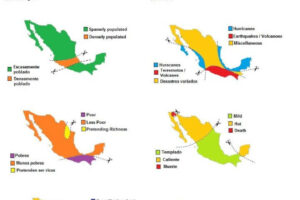
Mexico Divided By Stereotypes

32 Best Catan Expansions, Editions & Extensions – Reviewed & Ranked Best To Worst

Working Women: Which Countries Have the Most & Least In The Workforce

Blood (Jus Sanguinis) vs Land (Jus Soli) Based Rules For Citizenship
200 years of us population growth in 2 minutes.

Jewish Population of Europe in 1933 and 2015
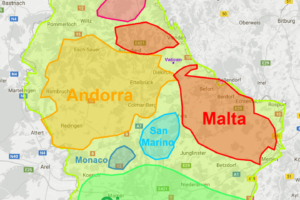
Luxembourg Is Not A Microstate!
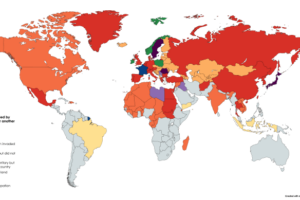
Every Country Invaded by France
Leave a reply cancel reply.
Your email address will not be published. Required fields are marked *
This site uses Akismet to reduce spam. Learn how your comment data is processed .
Safety tips from the US government for Americans traveling to Mexico
A travel advisory for the country has been in effect since late august 2023, by dana williams • published may 4, 2024 • updated on may 4, 2024 at 5:24 pm.
The U.S. Department of State has been cautioning Americans to reconsider travel to Baja California, the region of Mexico, where four bodies were recently found .
The warning is part of a travel advisory for the country that has been in effect since late August 2023. According to the department’s website, “violent crime – such as homicide, kidnapping, carjacking and robbery – is widespread and common in Mexico.”
24/7 San Diego news stream: Watch NBC 7 free wherever you are
It also adds that because U.S. government employees are restricted or prohibited from going to certain areas in Mexico, it makes it difficult for them to provide emergency services to U.S. citizens who might need it.
However, they shared tips for Americans who travel to the region against their warning:
Get San Diego local news, weather forecasts, sports and lifestyle stories to your inbox. Sign up for NBC San Diego newsletters.
- Keep friends and family informed of your travel plans.
- If separating from a group, share your GPS location with a friend.
- If taking a taxi alone, take a photo of the taxi’s number and/or plate and send it to a friend.
- Use toll roads when you can and do not drive alone or at night.
- Be extra cautious when visiting local bars, nightclubs or casinos.
- Do not show any signs of wealth (i.e. jewelry, etc.)
- Be vigilant around banks and ATMs.
The department also suggests enrolling in the Smart Traveler Enrollment Program .
For more information on the travel advisory, click here .
This article tagged under:
US officials warn of 'serious risk' traveling to Tijuana and Rosarito, Baja California
The arrest of a prominent cartel leader is prompting the U.S. Embassy in Mexico to warn American tourists to avoid Tijana, Rosarito and Baja California due to serious safety risks.
BAJA CALIFORNIA, Mexico - Americans are putting themselves at "serious risk" if traveling to Tijuana and Rosarito, Baja California.
That's according to a new travel advisory issued by the United States Embassy in Mexico, elevating the current threat level to three of four.
Officials said the risk was increased due to the arrest of a prominent cartel leader in Baja.
The travel advisory reads:
Americans are strongly urged to reconsider travel.
If you must travel to the "serious risk" areas, officials released the following list of actions to take:
- Be aware of your surroundings
- Maintain a high level of vigilance and keep a low profile
- Monitor local media for updates and in case of emergency, call 911
- Review your personal security plans and follow the instructions of local authorities

U.S. Issues New Travel Advisory for Baja California Including Los Cabos
By: Author Graciela Zamora
Posted on Published: March 27, 2022
Share The Article
- Facebook 45
Last Updated 2 years ago
The U.S. State Department has issued a new travel advisory for Baja California that includes the popular tourism area of Cabo.
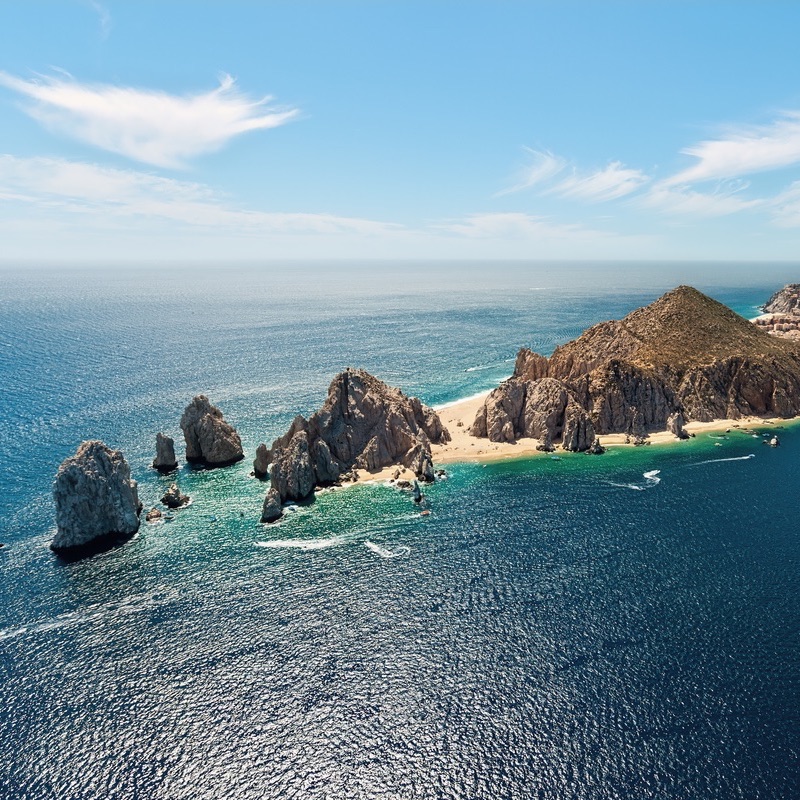
The U.S. government recommended its citizens “reconsider” their travel plans to Mexico due to a high level of COVID-19 cases and the growing safety concerns and violence cases related to organized crime and drug trafficking. The current administration issued through the State Department a new travel alert. It warns that according to the U.S. Centers for Disease Control and Prevention (CDC), the level of COVID-19 infection in Mexico is level 3.
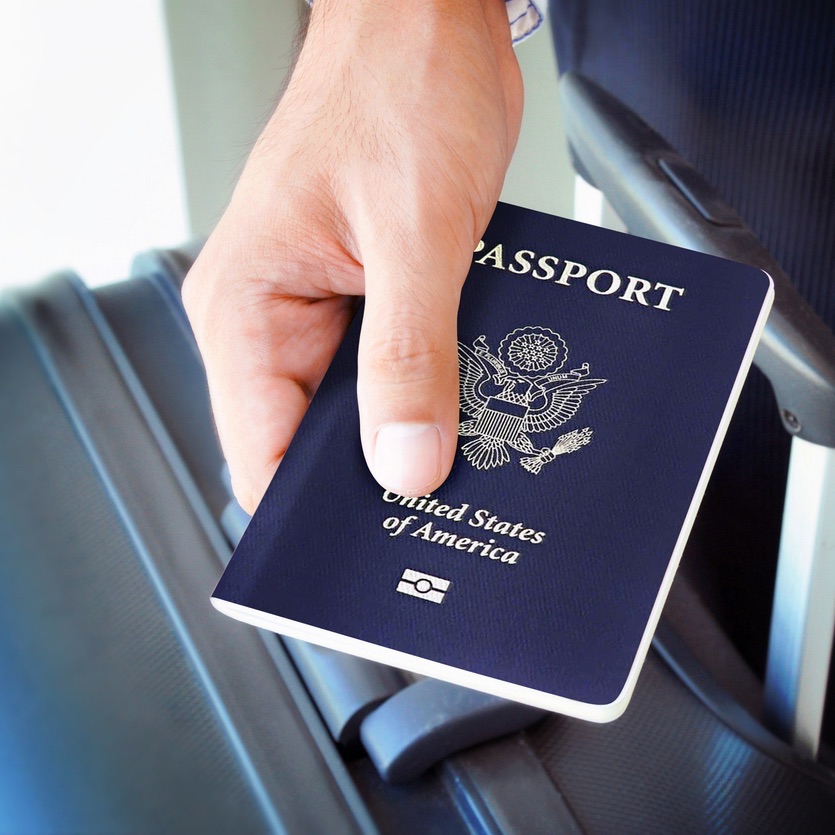
The U.S. issues a travel alert for Mexico and asks Americans not to travel to 5 states due to crime. “The risk of contracting COVID-19 and developing severe symptoms may be lower if travelers are fully vaccinated,” states the new and updated alert to U.S. citizens launched by the State Department for travel to Mexico.
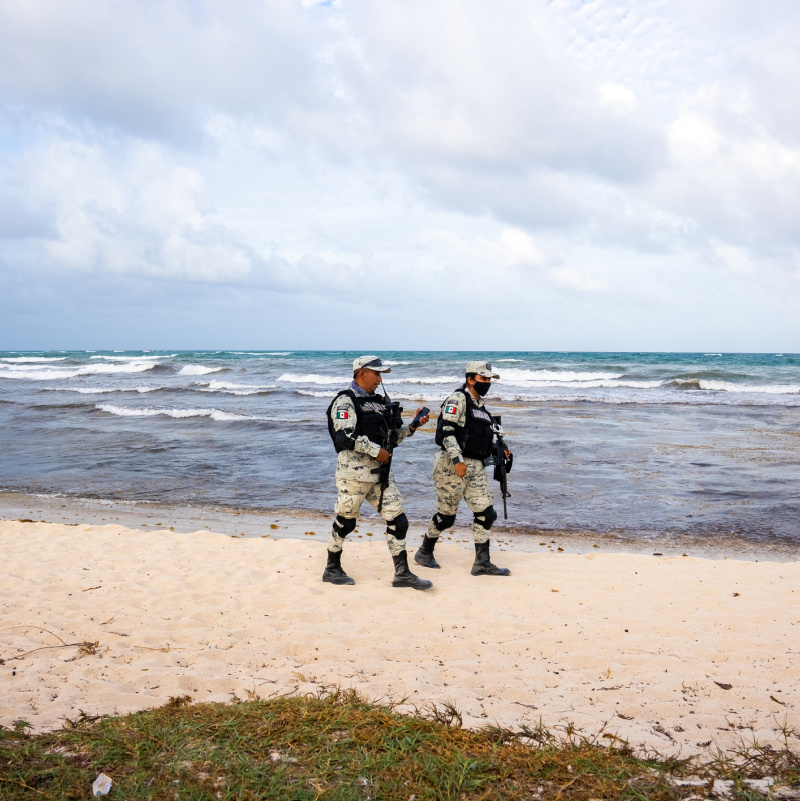
Regarding the climate of insecurity and violence related to organized crime and drug trafficking, the U.S. government emphasizes that traveling to Mexico implies the possibility of being a victim of homicide, kidnapping, car theft, and assaults that are very common in that country.
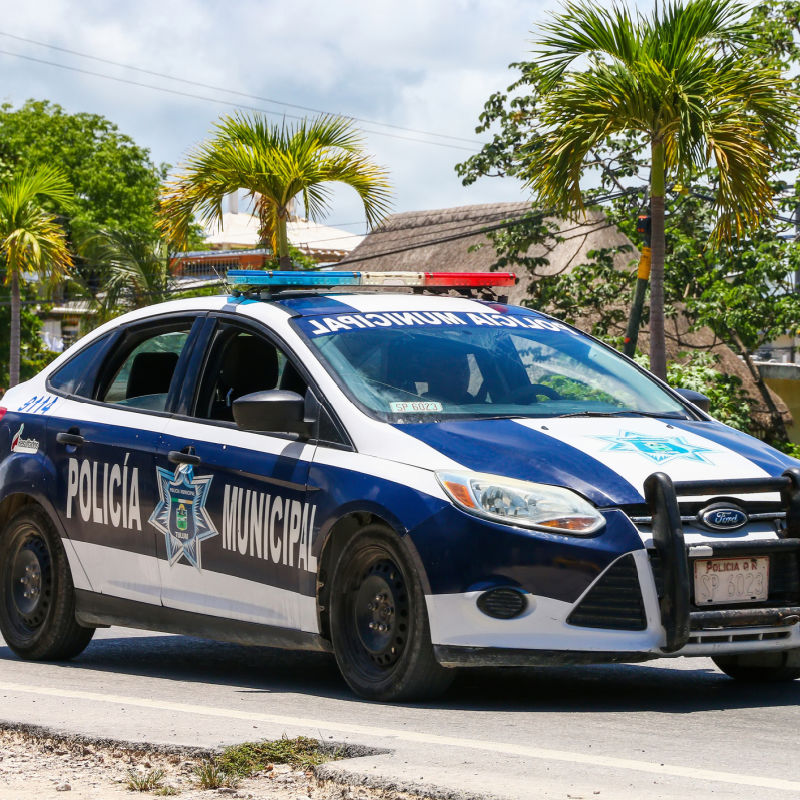
“The U.S. government has a limited capacity to provide emergency services to U.S. citizens in many areas of Mexico, considering that government employees are prohibited or restricted from moving through certain regions of that country.” U.S. Embassy Employees in Mexico and its consulates are prohibited from traveling at night, taking taxis on the street, and driving through some areas of the country’s northern and inland border. The State Department advises U.S. citizens that due to high levels of crime and kidnappings to avoid travel to the Mexican states of Colima, Guerrero, Michoacán, Sinaloa, and Tamaulipas.
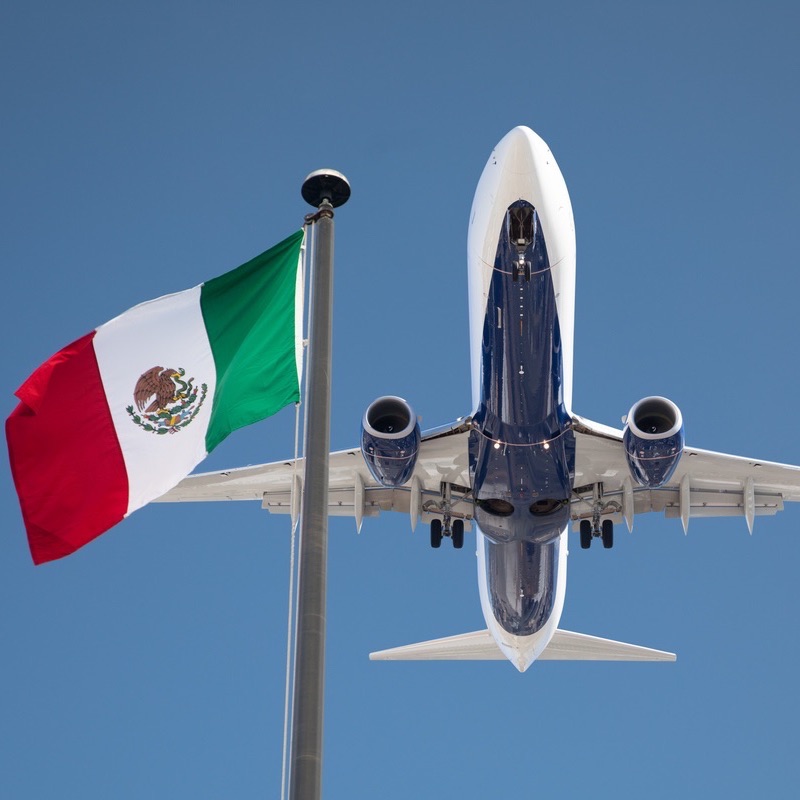
He adds that for the same situations they should reconsider travel plans to the states of Baja California, Chihuahua, Coahuila, Durango, Guanajuato, Jalisco, State of Mexico, Morelos, Nayarit, Sonora and Zacatecas.
For trips to Aguascalientes, Baja California Sur, Hidalgo, Mexico City, Nuevo León, Oaxaca, Puebla, Querétaro, Quintana Roo, San Luis Potosí, Tabasco, Tlaxcala and Veracruz, the U.S. government asks travelers to take the necessary precautions due to crime and kidnapping cases.
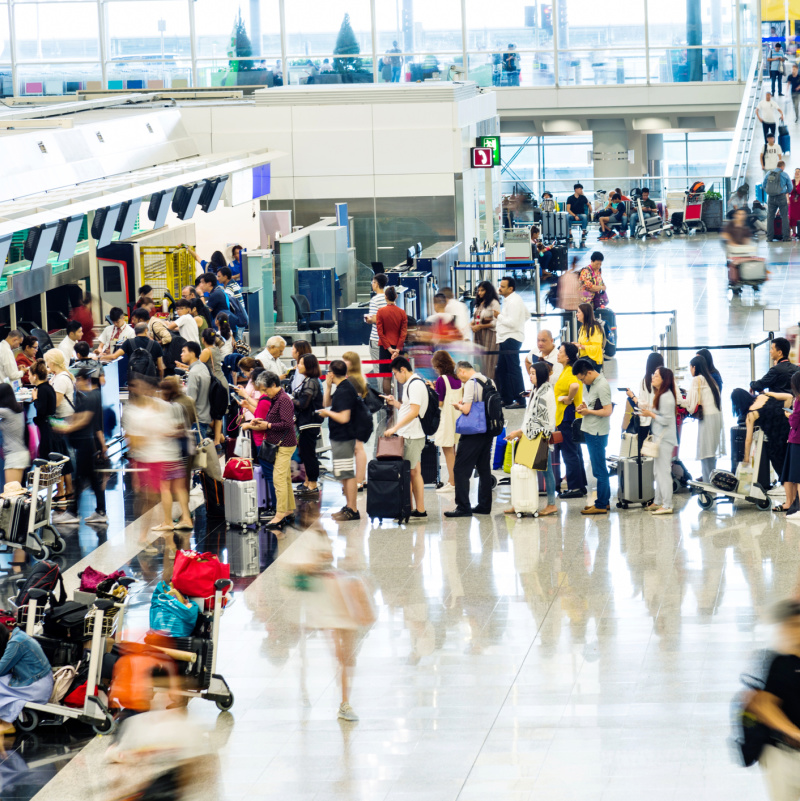
For more information on the travel advisories for Mexico, you can visit travel.state.gov.
This news comes after the annual review issued by Allianz Partners of the “Top 10 Spring Break Destinations”. American tourists plan to travel to warm weather destinations, and spring break bookings have increased 134% this 2022 vs. 2021. Mexico and other international destinations are a favorite this travel season. While there are still entry restrictions for some international destinations, there is an increasing demand after 2 years of lockdowns, and this can be reflected in airline routes being restored. For the fourth consecutive year, Mexico holds the 3 top spots, with Cancun on the No. 1 spot and Los Cabos y Puerto Vallarta holding the No. 2 and 3 spot of the Top 10 International list.
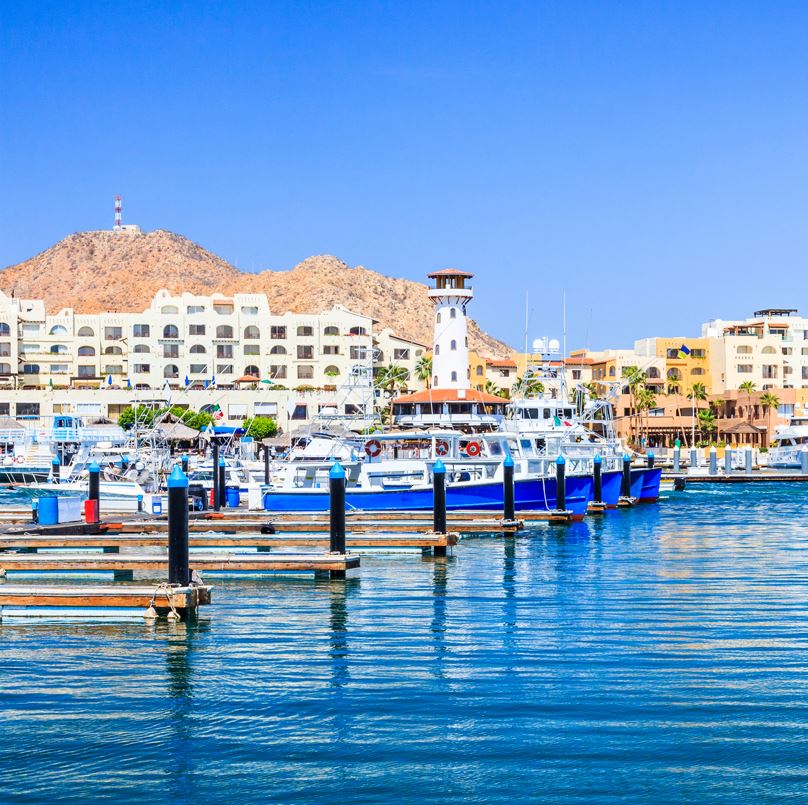
The CDC just recently changed Mexico’s travel advisory rating, moving it from Level 4 (very high risk) to Level 3 (high risk) for COVID. Mexico has had almost 5.64 million cases of COVID-19 and around 322,000 deaths as of March 24. President Andrés Manuel López Obrador has come under fire for not taking enough measures to control the virus. According to critics, life has continued quite normal for many, without strict restrictions, which has led to high mortality and infection rates.
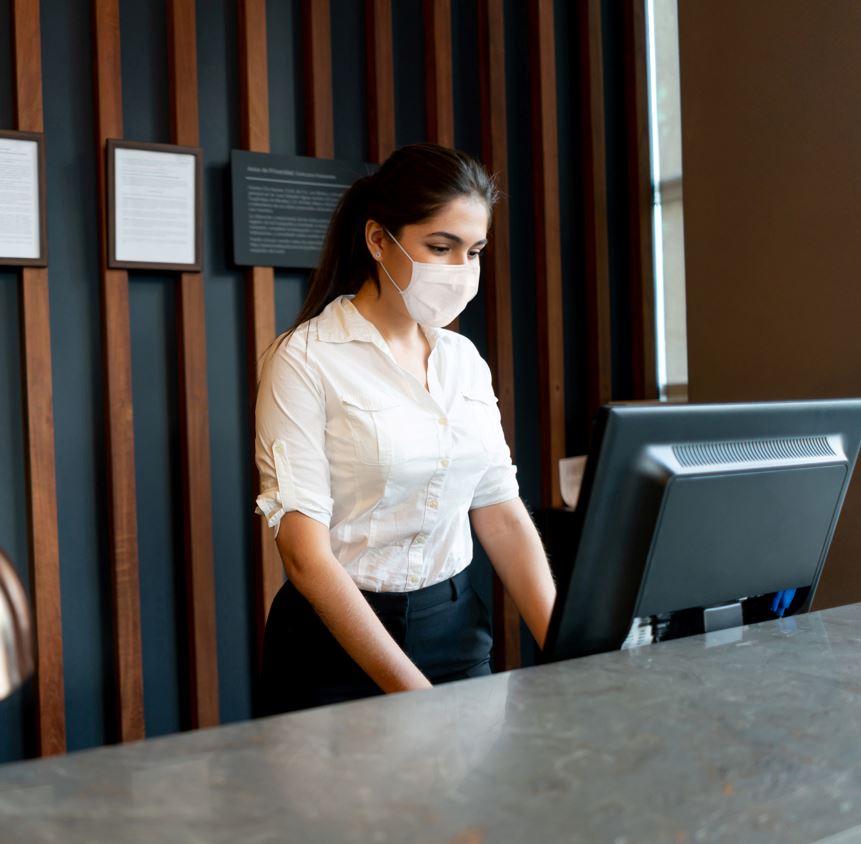
Mexico has dispensed approximately 189 million vaccine doses and continues to implement its traffic light system of restrictions. With green meaning, there are no restrictions in place.
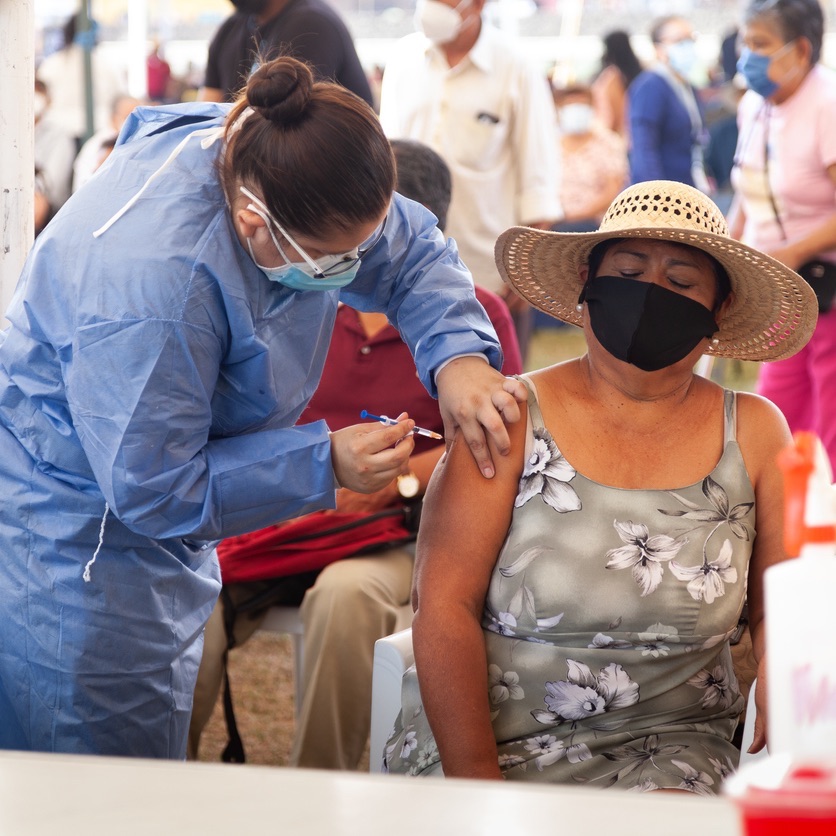
As of March 18, all of the most popular destinations were green, which include the following states:
– Baja California ( border city Tijuana neighbor to San Diego, California ).
– Baja California Sur ( Los Cabos ).
– Guanajuato, ( San Miguel de Allende where many expats are located ).
– Jalisco ( Puerto Vallarta ).
– Mexico City ( the cosmopolitan country’s capital ).
– Quintana Roo ( Cancun/Riviera Maya ).
Wilma Veronico
Wednesday 22nd of February 2023
I’m traveling to Cabo San Lucas march 22 to April 22. Will Covid be a problem at this time especially since I’m not vaccinated
- Search Please fill out this field.
- Manage Your Subscription
- Give a Gift Subscription
- Newsletters
- Sweepstakes
U.S. Issues Travel Warning for Mexico Ahead of Spring Break
The warning is asking travelers to “travel smart” and “be informed."
:max_bytes(150000):strip_icc():format(webp)/alison-fox-author-pic-15f25761041b477aaf424ceca6618580.jpg)
marako85/Getty Images
The United States is warning travelers heading to Mexico to be aware of their surroundings ahead of the spring break holiday season.
The warning , which was issued this week by the U.S. Embassy and Consulates in Mexico, reminds travelers to “travel smart” and “be informed” as “thousands of U.S. citizens visit Mexico during spring break” each year. The embassy continued that “while the vast majority travel safely,” visitors should be aware of issues with crime, drugs, unregulated alcohol, drownings, and more.
“Crime, including violent crime, can occur anywhere in Mexico, including in popular tourist destinations. Travelers should maintain a high level of situational awareness, avoid areas where illicit activities occur, and promptly depart from potentially dangerous situations,” the embassy warned. “U.S. citizens should exercise increased caution in the downtown areas of popular spring break locations including Cancun, Playa Del Carmen, and Tulum, especially after dark.”
The warning also reminded American travelers that drug possession and use is illegal in Mexico, including medical marijuana. It also advised that unregulated alcohol may be contaminated, that counterfeit medication is common, and that guns are illegal in Mexico.
When it comes to the country’s popular beaches, the embassy reminded travelers some beaches may have strong rip tides and “may lack lifeguards, warnings, or signs of unsafe conditions.”
The U.S. Embassy and Consulates in Mexico issued a similar spring break warning last year .
The U.S. Department of State classifies different states in Mexico under different warning levels. While travelers can “exercise normal precautions” when traveling to the Campeche and Yucatan states, the State Department warns them to “exercise increased caution” when heading to places like Baja California Sur (where Los Cabos is), Mexico City, and Quintana Roo (where Cancun is) due to crime.
The State Department also asks American travelers to “reconsider” going to the state of Jalisco, which is home to popular destination Puerto Vallarta , due to the danger of crime and kidnapping.
The State Department recommends Americans who do travel to Mexico keep people at home informed of their travel plans and enroll in the department’s Smart Traveler Enrollment Program (STEP) to both receive alerts and make it easier to locate them if an emergency occurs.
Travelers heading to international destinations can view all current travel advisories on the State Department's website at travel.state.gov .
Related Articles
- Skip to primary navigation
- Skip to main content
- Skip to primary sidebar
- Skip to footer
TravelAwaits
Our mission is to serve the 50+ traveler who's ready to cross a few items off their bucket list.
U.S. State Department Renews Warning About Travel To Mexico — Where It Says Visitors Can Travel This Spring

- News and Tips
- Travel News
Mexico is one of the most popular international destinations for American travelers. Cancun, Tulum, and Playa del Carmen particularly draw high numbers of tourists from the U.S.
However, as the spring break and Easter travel season approaches, anyone planning a trip to Mexico this spring must reckon with the sobering news of four Americans who were recently attacked by gunmen while traveling in Mexico.
The four individuals had traveled to Mexico so one could have a medical procedure. Then, in the city of Matamoros in Tamaulipas state, just south of Brownsville, Texas, the four were shot at and kidnapped. Two of them were killed in the gunfire. The other two, one of whom was also shot, have now been returned to the U.S., according to NBC News .
The U.S. Embassy & Consulates in Mexico issued a statement reminding U.S. citizens that it previously issued a travel advisory listing Tamaulipas state as a “Level 4: Do Not Travel” area in Mexico.
The natural inclination for anyone planning to travel to Mexico, as well as for family and friends of those prospective travelers, is now to question whether or not it’s safe to visit Mexico.
Zachary Rabinor, founder and CEO of the travel company Journey Mexico, says it’s important to remember that the Americans were killed and kidnapped a long distance from popular tourist destinations in Mexico.
“To put things in perspective, Matamoros is about 1,360 miles away from Cancun,” Rabinor said, according to CNN . “That’s about the equivalent distance from the Texas side of the border to Chicago, Illinois.”
Jaime Lopez-Aranda, a senior security manager at travel risk management firm International SOS, agrees that popular resort areas are still fairly safe.
“It is relatively safe for travelers to head to tourist destinations and major urban centers such as Mexico City, Guadalajara, and Monterrey,” Lopez-Aranda told CNN Travel.
Importantly, the U.S. State Department has issued a number of advisories for U.S. citizens traveling to various Mexican states in recent weeks. Now, as violent crime and kidnapping rates increase across Mexico, Americans considering travel to all but two of the states in Mexico should be aware of renewed and increased warnings, the State Department cautions.
“Violent crime — such as homicide, kidnapping, carjacking, and robbery — is widespread and common in Mexico,” the State Department explains .
“The U.S. government has limited ability to provide emergency services to U.S. citizens in many areas of Mexico, as travel by U.S. government employees to certain areas is prohibited or restricted,” the State Department continues. “In many states, local emergency services are limited outside the state capital or major cities.”
Here are the State Department’s travel advisories for each of Mexico’s states.
Do Not Travel To
The State Department advises U.S. citizens to not travel to five states in Mexico due to increasing levels of crime and kidnapping.
Those states are Colima (where Manzanillo is located), Michoacan, Sinaloa (where Mazatlán is located), Tamaulipas, and Zacatecas (home to Zacatecas City).
Guerrero — where Acapulco, Zihuatanejo, and Ixtapa are located — is also on the State Department’s “Do Not Travel” list because crime is widespread in those areas.
Reconsider Travel To
The State Department advises U.S. citizens to “reconsider travel” to five states in Mexico due to crime and kidnapping.
Those states are Baja California (where Tijuana is located), Chihuahua, Guanajuato (where Guanajuato City is located), Jalisco (home to Guadalajara and Puerto Vallarta), and Sonora.
The states of Durango and Morelos are also on the State Department’s “Reconsider Travel To” list due to high crime rates.
Exercise Increased Caution When Traveling To
The State Department advises U.S. citizens to “exercise increased caution when traveling to” 17 areas of Mexico, primarily due to crime rates but also due to the threat of kidnapping in some places.
Those states are Aguascalientes, Baja California Sur (where Cabo San Lucas , San Jose del Cabo, and La Paz are located), Chiapas, Coahuila, Hidalgo, Mexico State, Nayarit, Nuevo Leon, Oaxaca (home of Oaxaca City and Huatulco), Puebla, Queretaro, Quintana Roo (where Cancun , Cozumel, Tulum, and Riviera Maya are located), San Luis Potosi, Tabasco, Tlaxcala, and Veracruz.
Mexico City is also on the list due to high crime rates.
Exercise Normal Precautions When Traveling To
The State Department advises U.S. citizens to “exercise normal precautions when traveling to” Campeche and Yucatan, where Chichen Itza and Merida are located.
Know Before You Go
If you decide to travel to Mexico, the State Department offers some guidance.
“Exercise increased caution when visiting local bars, nightclubs, and casinos,” the State Department recommends. “Do not display signs of wealth, such as wearing expensive watches or jewelry. Be extra vigilant when visiting banks or ATMs.”
U.S. citizens with an emergency are also reminded that they can call the U.S. Embassy & Consulates in Mexico for help.
U.S. citizens on their way to Mexico are also advised to make a note of U.S. Embassy & Consulates emergency contacts in the area where they will be traveling.
Finally, the State Department recommends international travelers enroll in STEP, the Smart Traveler Enrollment Program .
Doing so enables U.S. citizens and nationals traveling and living abroad to enroll their trip with the nearest U.S. Embassy or consulate. That way travelers can receive important information from the Embassy about safety conditions in their destination country, make it easy for the U.S. Embassy to contact travelers in the event of an emergency, and also make it easier for family and friends to contact travelers in case of an emergency.
For more about changing travel conditions in countries around the world, be sure to read our Travel News content, including:
- New Cost To Travel To Europe Delayed Until 2024 — What Visitors Need To Know
- Traveling To Europe This Spring? 5 Countries Where Strikes Could Affect Your Trip
- TSA Is Asking Travelers With Pets To Stop Doing This One Thing — Here’s What It Is

Jim Fulcher has been a writer and editor his entire career. In addition to writing, he also enjoys traveling--particularly in an RV. Over the course of numerous trips, Jim has driven an RV through West Virginia, Virginia, Tennessee, Kentucky, Indiana, Illinois, Wisconsin, Iowa, Nebraska, South Dakota, and Wyoming. His favorite national park is Yellowstone, which he has visited three times.
Watch CBS News
CDC warns travelers to Mexico's Baja California of exposure to deadly Rocky Mountain spotted fever
By Simrin Singh
December 8, 2023 / 10:09 PM EST / CBS News
The U.S. Centers for Disease Control and Prevention is warning travelers to Baja California, Mexico, about Rocky Mountain spotted fever, a potentially fatal bacterial disease that spreads through the bite of an infected brown dog tick, which can be carried by pets.
The warning comes after a San Diego, California, resident who traveled to Baja California died last month after contracting the disease, San Diego County Public Health Services reported .
In addition to Baja California, RMSF has been found in the Mexican states of Sonora, Chihuahua, Coahuila and Nuevo León.
In the level 1 travel advisory issued Friday, the CDC urged travelers who develop symptoms of RMSF during travel, or within two weeks of returning to the U.S., to seek medical attention.
Symptoms of RMSF include fever, headache, and rash, which can develop two to four days after the onset of symptoms, according to the CDC.
The disease can progress quickly in infected patients and can become deadly if not treated early with the antibiotic doxycycline. Children under 10 years of age are five times more likely to die from RMSF, the CDC said.
San Diego County public health officials said the last time someone from San Diego died from RMSF was in 2014.
- Centers for Disease Control and Prevention
- CDC Guidelines
- Travel Warning
Simrin Singh is a social media producer and trending content writer for CBS News.
More from CBS News

U.S. woman killed by elephant in Zambia, the second this year
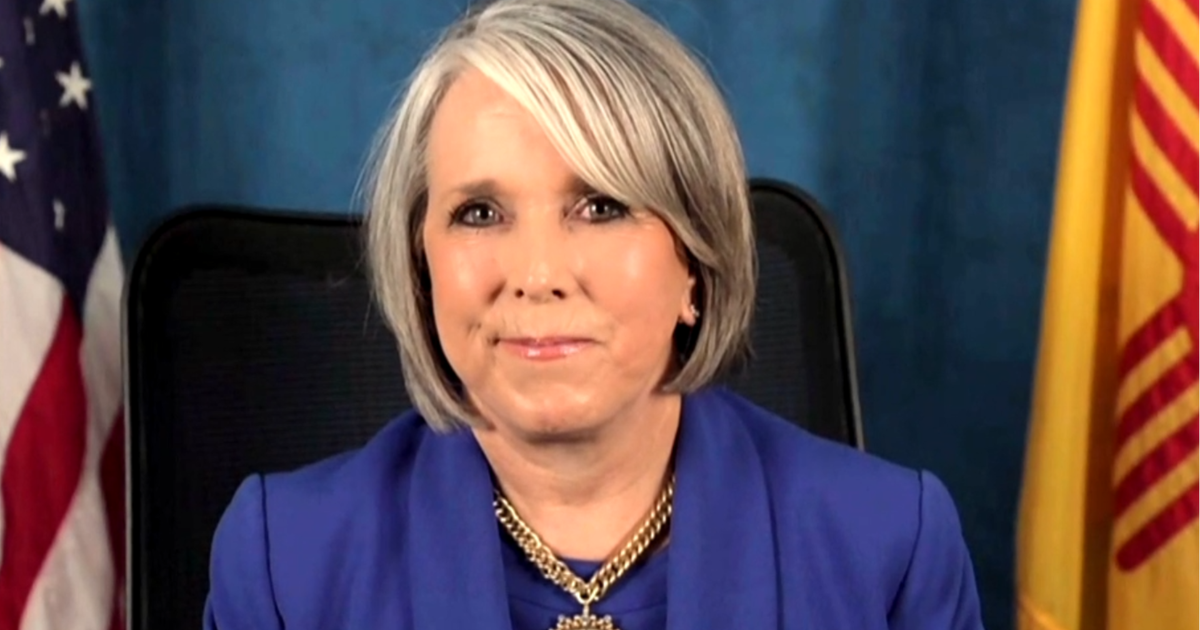
N.M. governor says abortion increased after Dobbs because "more women are at risk"

Family of 6 found dead by rescuers after landslide in eastern China

California man missing for more than a week found alive
Traveling to Mexico? See these travel advisories before booking your spring break trip

A woman was murdered in Tulum, a popular vacation resort for tourists in the Quintana Roo State. The American tourist, identified as 44-year-old Los Angeles native Niko Honarbakhsh, was shot and killed in the crossfire of a drug deal gone wrong.
The Feb. 9 incident involved an alleged drug dealer from Belize, according to ABC News .
Tulum has had previous incidents with tourists dying as a result of drug and gang-related activity.
U.S. Travel Advisories
The U.S. State Department warned travelers on their website to beware of where they’re going if visiting Mexico. Last year, the department issued “do not travel” for parts of Mexico for spring break. The department cites kidnappings, gang violence and other crimes that travelers need to be aware of. As of now, Quintana Roo is under an exercise-increased-caution advisory .
Travel advisories: US issues travel advisory for Jamaica, but it's not the only one
What states in Mexico have a Level 4 travel warning?
The U.S. Department of State has a “do not travel” warning on these states:
- Colima state due to crime and kidnapping.
- Guerrero state due to crime
- Sinaloa state due to crime and kidnapping
- Tamaulipas state due to crime and kidnapping.
- Zacatecas state due to crime and kidnapping.
Looking for an island getaway? These vacation destinations are safe for travel
What states in Mexico have a Level 3 travel warning?
The U.S. Department of State has a “reconsider travel” warning on these states:
- Baja California state due to crime and kidnapping.
- Chihuahua state due to crime and kidnapping.
- Durango state due to crime.
- Guanajuato state due to crime and kidnapping.
- Jalisco state due to crime and kidnapping.
- Morelos state due to crime.
- Sonora state due to crime and kidnapping
What states in Mexico have a Level 2 travel warning?
The U.S. Department of State has an “exercise increased caution when traveling” warning on these states:
- Aguascalientes state due to crime.
- Baja California Sur state due to crime.
- Chiapas state due to crime.
- Coahuila state due to crime.
- Hidalgo state due to crime.
- Mexico City due to crime.
- Mexico State due to crime.
- Nayarit state due to crime.
- Nuevo Leon state due to crime and kidnapping.
- Oaxaca state due to crime.
- Puebla state due to crime and kidnapping.
- Queretaro state due to crime.
- Quintana Roo state due to crime.
- San Luis Potosi state due to crime and kidnapping.
- Tabasco state due to crime.
- Tlaxcala state due to crime.
- Veracruz state due to crime.
What states in Mexico have a Level 1 travel warning?
The U.S. Department of State has an "exercise normal precautions when traveling” warning on these states:
- Campeche state
- Yucatan state
Traveling abroad? Here’s what you need to know.
U.S. citizens are encouraged to enroll in the State Department’s free Smart Traveler Enrollment Program and to prepare contingency plans for emergencies.
Safety tips if you're traveling outside the U.S.:
- Don't travel alone.
- Be aware of your surroundings.
- Keep a low profile.
- Try not to be flashy.
- Avoid going to places at night, especially by yourself.
Have a plan before travel
Have a crisis plan in place. It’s recommended by the Department of State to make an evacuation plan that does not rely on the U.S. government. Consider buying emergency evacuation insurance . If a crisis occurs while you are abroad, check in with loved ones and update your social media status so family and friends know of your whereabouts.
FOX 5 San Diego & KUSI News
State Department warns to reconsider travel to Baja California after Mexico kidnapping
by: Liberty Zabala
Posted: Mar 6, 2023 / 10:55 PM PST
Updated: Mar 7, 2023 / 12:48 PM PST
SAN YSIDRO, Calif. — After recent State Department warnings against traveling to Mexico ahead of spring break, new concerns are arising as the FBI investigates four U.S. citizens kidnapped at gunpoint there.
The State Department is warning U.S. citizens “do not travel” to five Mexican states. This comes after four U.S. citizens were kidnapped near the Texas-Mexico border . Authorities says they were in the country to buy medicine.
“I have gone to Mexico for all sorts of things whether it be for fun, leisure, vacation, just to see friends,” says traveler Jacob Felix. “Mexico is pretty popular for that kind of stuff. It’s very, very cheap. If you’ve ever been to Mexico or if anyone’s ever been to TJ in general, every corner has a pharmacy on it.”
The State Department also warns Americans to reconsider travel to Baja California where this traveler is headed for the night.
“I think we always have to be aware of what’s going on around us but we also can’t let fear dictate our decisions. I’m not going to be going for that long but I appreciate the heads up,” said traveler John Gustafson.
The State Department Travel Advisory says in part:
“Violent crime – such as homicide, kidnapping, carjacking, and robbery – is widespread and common in Mexico. The U.S. government has limited ability to provide emergency services to U.S. citizens in many areas of Mexico…”
“I think it’s just kind of wrong place wrong time. It’s very unfortunate what happened but you know bad stuff happens everywhere,” Felix said. “I don’t think you should let this one negative situation affect the entire country of Mexico.”
The FBI is also offering a $50,000 reward for the return of the kidnapped victims and the arrest of those involved.
Suggest a Correction
Thanks for signing up!
Watch for us in your inbox.
Subscribe Now
12 p.m. Noon News

Most Popular Stories
Earthquakes rattle southern california over the weekend, big changes coming for texting on iphones, search underway for missing hiker on black mountain, photos: spacex starlink launch visible across san …, sd spot named best indie ice cream shop: usa today.

BestReviews.com - Top picks to make everyone happy
The viral beauty products that are exploding on tiktok, …, best prime day home deals 2024, our diy expert weighs in on the best father’s day …, best prime day electronics deals 2024, best prime day kitchen and cookware deals 2024, last-minute father’s day gifts, tested and reviewed.
- TV & Film
- Say Maaate to a Mate
- First Impressions - The Game
- Daily Ladness
- Citizen Reef
To make sure you never miss out on your favourite NEW stories , we're happy to send you some reminders
Click ' OK ' then ' Allow ' to enable notifications

UK Foreign Office throws holidays into disarray after 'don't travel' cyclone warning
The foreign, commonwealth and development office advises against all but essential travel to parts of the country.
Tom Earnshaw
A warning against all but essential travel to a country loved by British tourists has been issued by the UK's Foreign Office due to the impending threat of a major cyclone.
The Foreign, Commonwealth and Development Office (FCDO) issued the important advice on Tuesday (18 June), with it still active a day later and no sign of it being lifted any time soon.
As per daily checks, officials from the government department update UK travel guidance for countries across the world to give UK travellers the most up to date information available on visiting every country on the planet.
That includes giving important advice on warnings and insurance issues you might encounter to basic entry requirements so you're not turned away at passport control .
The latest information on security, health and safety risks can also be found alongside any regional risks inside the country you're heading too.
And should you get in trouble, you can find help pages on who to contact in case of emergency whether that by local police, paramedics, fire departments or insurance issues.
.jpg)
In the latest advice, the Foreign Office send countless holidays in to disarray after issuing the warning for Mexico.
With eight regions of the country falling under the new travel advice, it is certain to have disrupted a whole load of travellers.
But it is for good reason, with Mexico at major risk of being hit by a tropical cyclone with winds of up to 74mph and torrential rain. Up to 150 millimeters of rain will fall across the country.
And the Foreign Office warns that if you still travel, you could be in a lot of financial trouble should you get in to dire straits.

"Your travel insurance could be invalidated if you travel against advice from the Foreign, Commonwealth and Development Office," it says.
The US state of Mexico is also set to be hit by the massive pour down, with the National Hurricane Center noting a 'tropical disturbance' in the south-west Gulf of Mexico.
It now has a 60 per cent chance of developing into a tropical cyclone during the next week.
Areas of Mexico where Foreign Office advises against all but essential travel
- State of Baja California - All but essential travel to the city of Tijuana, except airside transit through Tijuana airport; the Cross Border Xpress bridge from the airport linking terminals across the Mexican-US border; and the federal toll road 1D and Via Rápida through Tijuana to the border.
- State of Chihuahua - All but essential travel to the state of Chihuahua except to the city of Chihuahua; Ciudad Juarez border crossing; federal toll road 45D connecting the cities of Chihuahua and Ciudad Juárez; the Copper Canyon rail route to and from Chihuahua and towns immediately on this route including Creel; the road from Creel via San Juanito to San Pedro; and state highway 16 from San Pedro to Chihuahua.
- State of Sinaloa - Advice against all but essential travel to the state of Sinaloa, except the cities of Los Mochis and Mazatlán; road 32 that runs between El Fuerte and Los Mochis; the 15D federal toll road that runs the length of the state ;the Copper Canyon rail route to and from Los Mochis; and El Fuerte and the towns immediately on this route.

- State of Tamaulipas - Advice against all but essential travel to the state of Tamaulipas, except the border crossing at Nuevo Laredo accessed by federal toll road 85D from Monterrey; federal highways 80, 81 and 85 between Tampico, Ciudad de Victoria and Magueyes, and the entire area of Tamaulipas south of these highways
- State of Zacatecas - Foreign Office advises against all but essential travel to the state of Zacatecas.
- State of Guanajuato - Advice against all but essential travel to the areas south-west of road 45D.
- State of Michoacán - FCDO advises against all but essential travel to the state of Michoacán, except the city of Morelia accessed by federal toll roads 15D, 126 and 43; and the federal toll road 48D between the city of Morelia and the General Francisco Mujica airport; town of Pátzcuaro accessed by federal toll roads 14D and 15 from Morelia, and boat trips out to islands on Lake Pátzcuaro; and Federal Highway 15D.

- State of Jalisco - FCDO advises against all but essential travel to the areas south and south-west of Lake Chapala to the border with the state of Colima. Also advice against all but essential travel to the northern municipalities of Bolaños; Chimaltitán; Colotlán; Hostotipaquillo; Huejúcar; Huequilla el Alto; Mezquitic; San Martin de Bolaños; Santa Maria de los Ángeles; Totatiche; and Villa Guerrero.
- State of Colima - FCDO advises against all but essential travel to the state of Colima, except the city of Manzanillo accessed by sea or air via the Manzanillo-Costalegre International Airport, and direct travel via road 200 from the airport to Manzanillo.
- State of Guerrero - FCDO advises against all but essential travel to the state of Guerrero, except the town of Zihuatanejo/Ixtapa accessed by air.
- State of Chiapas - FCDO advises against all but essential travel to within 40km of the Guatemalan border between the Pacific Coast up to and including the border crossing at Gracias a Dio. Also advises against all but essential travel on Federal Highway 199 (Carretera Federal 199) between Rancho Nuevo (just outside San Cristobal de las Casas) and the Chancalá junction just outside Palenque (where Federal Highway 199 meets Federal Highway 307).
Topics: Holiday , Travel , UK News , World News , Weather
Tom joined LADbible in 2024, specialising in SEO and trending content. He moved to the company from Reach plc where he enjoyed spells as a content editor and senior reporter for one of the country's most-read local news brands, LancsLive. When he's not in work, Tom spends his adult life as a suffering Manchester United supporter after a childhood filled with trebles and Premier League titles. You can't have it all forever, I suppose.
@ TREarnshaw
Choose your content:

'Prophet' who claimed God gave him a winning formula banned from casino after taking home £23k
Archbishop emmanuel mutumwa claims he has been blacklisted from casinos in zimbabwe who reckon he has an unfair advantage.

Expert warns humans could be wiped out by Last of Us-type 'fungi apocalypse'
A professor who has written over 1,000 papers on the subject has come out with some worrying news.

Google originally had a very different name and the former title sounded like something much more risqué
Thank your lucky stars that larry page and sergey brin went back to the drawing board before confirming the name.

'Eyebrow kid' from iconic Cadbury's advert unrecognisable 15 years after it hit screens
The boy from the iconic 2000s advert has recreated it, 15 years on.
- Foreign Office issues France travel warning lasting three months
- Foreign Office issues Brits 'harsh' prison warning over Thailand holidays
- Spain weather warning issued to UK tourists over ‘significant’ temperature change
- Foreign Office issues 'strict' warning to anyone wanting to travel to Australia

Days After Border Closes for Most Migrants, Manageable Crowds but More Anxiety
Shelters along the border were quieter on Friday and Saturday compared with previous months, but many hoping to cross into the U.S. felt stranded and fearful.
Reison Daniel Peñuela, from Venezuela, at the migrant shelter Senda de Vida in Reynosa, Mexico, on Saturday. Credit... Verónica Gabriela Cárdenas for The New York Times
Supported by
- Share full article
By Edgar Sandoval and Reyes Mata III
Edgar Sandoval reported from McAllen, Texas, and Reynosa, Mexico; and Reyes Mata III from Ciudad Juárez, Mexico.
- Published June 8, 2024 Updated June 10, 2024
On a hot and humid morning in the Mexican border city of Reynosa, less than a mile from the Rio Grande, one question seemed to linger in the minds of hundreds of people who had arrived Saturday at a shelter for migrants.
When would they be able to cross into the United States?
The answer remained elusive. At least 1,100 men, women and children, a majority of them from Central America and Venezuela, had arrived at Senda de Vida, a sprawling respite center consisting of makeshift tents and temporary wooden rooms, with hopes of reaching the United States. Instead, many felt stuck in limbo after President Biden signed an executive order that prevents migrants from seeking asylum along the 2,000-mile U.S.-Mexico border when crossings surge.
The order effectively closed the U.S. border for nearly all asylum seekers as of 12:01 a.m. on Wednesday.

The full effect of the new rule was difficult to assess three days after Mr. Biden’s announcement, but, as of Saturday, the number of migrants massing at the border showed signs of stabilizing, at least for now, compared with previous years, as many migrants appeared to be heeding the warning that they would be turned away, said Héctor Silva de Luna, a pastor who runs the shelter.
During the height of the migration crisis, he welcomed more than 7,000 people, he said. Many now appear to be waiting in the interior of Mexico, in cities like Monterrey and Mexico City, to see what happens. But the migrants at the border like the ones at Mr. de Luna’s shelter are “the ones that will pay the price,” he said, because they are being rejected.
For them, seeing the border closed produced yet more anxiety. Reison Daniel Peñuela, 29, from Venezuela, felt despondent knowing his wife and seven children were relying on him to reach the United States. On Saturday morning, he cast his eyes down as children chased one another and women cooked meals on a rudimentary stove. Before the new order took effect, three of his friends were able to cross the border and are now in Denver.
“I feel like I’m stuck here,” Mr. Peñuela said. “Now, I don’t know when I will be able to cross into the U.S. I can’t go back empty-handed now.”
For years, many migrants would turn themselves in at a port of entry or seek out a Border Patrol agent after crossing the Rio Grande, and then ask for asylum. The migrants would then be processed and released into the United States to wait for a court hearing, a process that could take years.
The number of migrants arriving at the border reached historic highs in recent years, up to 10,000 in a single day last December. More recently, those numbers have hovered around 3,000. By taking a page out of Donald Trump’s strict immigration policy playbook, Mr. Biden appears to be trying to clamp down on a major concern for voters from both parties and, increasingly, for Latinos on the border , a once reliable constituency, who are worried about unauthorized crossings.
The executive order does not address the issue of migrants who evade border authorities and do not seek asylum.
Not everyone at the shelter in Reynosa, Mexico, which is next to McAllen, felt helpless. Nuvia Baires, 34, from El Salvador, jumped for joy Saturday when, after seven months of trying, she learned she had been granted an asylum interview via CBP One, a mobile app that migrants must use before entering the United States to secure an appointment with the federal authorities to submit an asylum application. Mr. Biden’s executive order does not apply to those crossing the border legally by using the app.
“God answered my prayers,” Ms. Baires told a fellow migrant, Nicole Lopez, 20, of Honduras. “I was afraid I was going to stay here forever with that new rule.”
Others around her congratulated her but lamented that they had few options.
“This new rule is bad news, bad news for people like us who left everything to reach the border,” said Cintia Patricia Medina, 40, who left Honduras with her husband and four daughters. They cleaned up a modest wooden room on a sweltering day to make the most of their time here. “It is painful to be so close and being told you are not allowed to enter.”
The slowdown was also evident in McAllen, Texas, at a two-story respite center for new arrivals run by Catholic Charities. On Friday afternoon, Sister Norma Pimentel, the executive director for Catholic Charities of the Rio Grande Valley, counted about 133 people, many of them with young children, a far smaller number compared with the daily average of 600 to 800 people during the height of the surges.
Sister Pimentel said she expected the number of people seeking aid to remain low while the new order remained in effect. Immigration activists have vowed to challenge the measure in court, a process that could take months.
“We don’t help them because they are immigrants. We help them because they are in our community and they need help,” Sister Pimentel said.
Luzveisi Mora, 27, who left Venezuela 22 days ago, said she counted herself lucky to have arrived a day before the border closed. Ms. Mora recalled swimming the treacherous Rio Grande with her two young children Tuesday morning and suffering a severe cut to her abdomen from barbed wire.
She was forced to leave her native country, she said, where she worked odd jobs, earning the equivalent of about $5 a day, barely enough to buy a bag of flour. The small family was headed to New York, where the father of her children awaited them.
“If I had arrived just a day later, they would have sent me back,” she said. “If they had told me to turn back, I would not be able to return. I would find a way to go into the U.S. any way I could. Going back is not an option.”
Migrants arriving in the Mexican city of Ciudad Juárez, which borders El Paso, Texas, were also feeling nervous about the new order. Jorge Gomez, a lone 34-year-old Honduran man who arrived a day after the border was shut for people like him, sat hunched and weary near a patch of overgrowth at the river’s edge. He squinted and wiped dust from his arms.
“What I can say is that only God decides who can cross,” Mr. Gomez said. “I am alone, so I am afraid they will deport me.”
Pastor Juan Fierro García, the director of the Good Samaritan shelter in Ciudad Juárez, said he had seen more migrants trying their luck securing a CBP One appointment rather than risking deportation. Pastor García said he had noticed a slight uptick in new arrivals in recent days, with about 180 migrants at his shelter by Saturday.
“About 26 more are on their way here,” he said. “And more will be coming.”
Karen Piamo, a 27-year-old woman from Venezuela who arrived at a shelter in Ciudad Juárez with her husband and three children, was also feeling helpless.
“We were at the river already when I saw the news,” Ms. Piamo said. “I wanted to cry.”
Edgar Sandoval covers Texas for The Times, with a focus on the Latino community and the border with Mexico. He is based in San Antonio. More about Edgar Sandoval
Advertisement
- Entertainment
- Newsletters
Perturbación tropical, casi una depresión a las puertas del sureste de EE.UU.
Michael Lowry , Hurricane Specialist and Storm Surge Expert
La perturbación que hemos estado siguiendo desde este fin de semana aprovechó una ventana estrecha de condiciones más favorables para intentar convertirse en una depresión tropical al acercarse al sureste de EE.UU. el viernes por la mañana.
Los Cazadores de Huracanes todavía están investigando la circulación para determinar si se ha formado una depresión, pero de cualquier manera, se espera que el sistema tenga solo una presencia pasajera en la costa más tarde hoy.
Recommended Videos
El pequeño pero tenaz área de baja presión luchó contra el persistente cizallamiento del viento toda la semana para capitalizar un respiro tardío en los vientos hostiles de nivel superior a partir del jueves. El calor extra del océano junto con la corriente del Golfo cercana ayudaron a encender nuevas tormentas eléctricas a medida que se acercaba a las aguas del sureste, lo que ajustó la circulación superficial, una pieza crítica que faltaba en las misiones anteriores de los Cazadores de Huracanes de la Fuerza Aérea.
Aunque la circulación ha mejorado desde ayer, los pronosticadores del NHC tomarán la decisión final sobre si cumple con sus estrictos criterios para un centro bien definido que les permita actualizarlo a una depresión tropical.
Se actualice o no, no se espera que el sistema tenga tiempo para fortalecerse antes de moverse tierra adentro entre la Primera Costa del noreste de Florida y las Islas Doradas del sureste de Georgia más tarde esta noche. Muchas de estas áreas son inusualmente secas, por lo que las lluvias serán en gran medida beneficiosas y las inundaciones tierra adentro no son una preocupación por ahora.
El área de baja presión agitará el oleaje ya agitado y mantendrá la amenaza de corrientes de resaca peligrosas a lo largo de las playas del sureste de EE.UU., con la posibilidad de inundaciones costeras menores y erosión de la playa alrededor de la marea alta más alta de lo normal de esta noche.
¿Otro sistema del Golfo en camino este fin de semana?
Los sistemas tropicales son un poco como los plátanos: a menudo los obtenemos en racimos. El Atlántico está demostrando eso esta semana con Alberto, la perturbación similar a una depresión que se acerca al sureste, y lo que podría convertirse en nuestro tercer sistema siguiendo de cerca los pasos de Alberto en el sur del Golfo.
Los modelos de pronóstico muestran un área amplia de baja presión formándose sobre la Bahía de Campeche en el extremo sur del Golfo este fin de semana. Dado que el sistema está comenzando grande como Alberto, no se espera que se organice rápidamente, pero podría consolidarse en una depresión o tormenta tropical de baja categoría antes de girar hacia el norte de México el domingo por la noche o el lunes.
El resultado será más aguaceros tropicales, principalmente en el norte de México, donde el terreno montañoso en el lado de barlovento (donde los vientos soplan por la ladera de la montaña) a menudo aumenta la amenaza de inundaciones.
Lugares como Monterrey, México, en las estribaciones de la Sierra Madre Oriental, vieron inundaciones generalizadas debido a las fuertes lluvias de Alberto esta semana y podrían enfrentar más inundaciones en los próximos días.
El Atlántico se calma la próxima semana
Después de toda la actividad esta semana, se espera que el Atlántico se calme a corto plazo, sin áreas adicionales de desarrollo probable más allá del fin de semana.
Copyright 2024 by WPLG Local10.com - All rights reserved.
About the Author
Michael lowry.
Michael Lowry is Local 10's Hurricane Specialist and Storm Surge Expert.
We’re sorry, this site is currently experiencing technical difficulties. Please try again in a few moments. Exception: request blocked

IMAGES
COMMENTS
Reissued after periodic review with general security updates, and the removal of obsolete COVID-19 page links. Country Summary: Violent crime - such as homicide, kidnapping, carjacking, and robbery - is widespread and common in Mexico.The U.S. government has limited ability to provide emergency services to U.S. citizens in many areas of Mexico, as travel by U.S. government employees to ...
25 restaurants, hotels and hidden wonders along the Baja Highway. March 15, 2023. All authorities agree that driving at night in rural Baja is dangerous because of the many roaming livestock. In ...
Read the Mexico Travel Advisory, including the detailed state summaries and advisory levels for information on your specific travel destination. Read the Mexico country information page. Assistance: Contact Form. U.S. Embassy and Consulates in Mexico. From Mexico: (55) 8526 2561. From the United States: +1-844-528-6611
Call us in Washington, D.C. at 1-888-407-4747 (toll-free in the United States and Canada) or 1-202-501-4444 (from all other countries) from 8:00 a.m. to 8:00 p.m., Eastern Standard Time, Monday through Friday (except U.S. federal holidays). See the State Department's travel website for the Worldwide Caution and Travel Advisories.
Dengue in the Americas May 16, 2024 Dengue is a risk in many parts of Central and South America, Mexico, and the Caribbean. Some countries are reporting increased numbers of cases of the disease. Travelers to the Americas can protect themselves by preventing mosquito bites. Destination List: Argentina, Brazil, Colombia, Costa Rica, Curaçao ...
Review the Country Security Report for Mexico. Mariners planning travel to Mexico should check for U.S. maritime advisories and alerts, which include instructions on reporting suspicious activities and attacks to Mexican naval authorities. Prepare a contingency plan for emergency situations. Review the Traveler's Checklist.
The warning is part of a larger travel advisory for Mexico that has been in place since late August 2023. NBC 7's Dana Williams reports on May 4, 2024. The U.S. Department of State has been ...
A new travel advisory issued for Americans by the U.S. Embassy in Mexico is strongly warning against travel to Tijuana and Rosarito, Baja California due to "serious risk" as a result of the recent ...
The U.S. State Department has issued a new travel advisory for Baja California that includes the popular tourism area of Cabo. The U.S. government recommended its citizens "reconsider" their travel plans to Mexico due to a high level of COVID-19 cases and the growing safety concerns and violence cases related to organized crime and drug ...
BAJA CALIFORNIA, Mexico — The United States Embassy in Mexico recently issued a travel warning to Americans. The warning comes after the arrest of a prominent cartel leader in Baja.
The United States is warning travelers heading to Mexico to be aware of their surroundings ahead of the spring break holiday season. The warning, which was issued this week by the U.S. Embassy and ...
Here are the State Department's travel advisories for each of Mexico's states. Do Not Travel To. ... Those states are Baja California (where Tijuana is located), Chihuahua, Guanajuato (where Guanajuato City is located), Jalisco (home to Guadalajara and Puerto Vallarta), and Sonora. ...
The US-Mexico border is seen near Nogales, Arizona. TUCSON, Ariz. (KVOA) — The Bureau of Consular Affairs has issued a travel advisory for anyone planning to travel to Mexico. The advisory ...
Published: 6:00 AM PDT July 8, 2022. Updated: 7:55 AM PDT July 8, 2022. WASHINGTON — The U.S. is warning tourists to stay away from several areas of Mexico near the U.S. border because officials ...
In the level 1 travel advisory issued Friday, the CDC urged travelers who develop symptoms of RMSF during travel, or within two weeks of returning to the U.S., to seek medical attention.. Symptoms ...
What states in Mexico have a Level 3 travel warning? The U.S. Department of State has a "reconsider travel" warning on these states: Baja California state due to crime and kidnapping.
The U.S. State Department has issued a travel advisory for Baja California in Mexico, which includes the sprawling border city of Tijuana, due to high rates of crime and kidnapping, the agency said.
Baja California has a Level 3 advisory in the U.S. State Department's travel advisory list due to kidnappings and crime, and venturing off the beaten path should be done with extreme caution.
After recent State Department warnings against traveling to Mexico ahead of spring break, new concerns are arising as the FBI investigates four U.S. citizens kidnapped at gunpoint there.
Location: Mexicali Valley, Baja California. Event: Cartel Violence. This Security Alert replaces the Security Alert of April 23, 2021. ... The Baja California state portion of the Travel Advisory for Mexico has been updated to read: Mexicali Valley: U.S. government employees should avoid the Mexicali Valley until further notice due to the ...
TaCabo. I used Mex once a several years ago and it didn't go well. They first couldn't find my reservation and bounced me between 2 locations. When trying to leave the lot with a car, a timeshare guy wouldn't take no for an answer.Held door handle when trying to drive away and calling me some choice names.
REYNOSA TAMAULIPAS, Mexico City — A travel advisory was issued for those thinking about traveling to the border town of Reynosa in Mexico. It sits about 20 miles south of McAllen, just across ...
Areas of Mexico where Foreign Office advises against all but essential travel. State of Baja California - All but essential travel to the city of Tijuana, except airside transit through Tijuana ...
Travel Advisory Level 3: Reconsider Travel Travel Advisory Level 3: Reissued after periodic review with general security updates, and the removal of obsolete COVID-19 page links. ... From Mexico: (55) 8526 2561. From the United States: 1-844-528-6611.
Edgar Sandoval reported from McAllen, Texas, and Reynosa, Mexico; and Reyes Mata III from Ciudad Juárez, Mexico. Published June 8, 2024 Updated June 10, 2024 Leer en español
El área de baja presión agitará el oleaje ya agitado y mantendrá la amenaza de corrientes de resaca peligrosas a lo largo de las playas del sureste de EE.UU., con la posibilidad de ...
The Mexican government has determined that from May 10, 2021, the state of Baja California is in yellow on the federal stoplight system. Public health restrictions continue to apply with the recommended use of a face mask and protective goggles. These are the activities and capacities allowed starting May 10, 2021, with the recommended use of a ...
See state summaries and advisory levels in the Mexico Travel Advisory for information on your specific travel destination. Some areas of Mexico have increased risk of crime and kidnapping. Assistance: Contact Form; U.S. Embassy and Consulates in Mexico; From Mexico: (55) 8526 2561; From the United States: 1-844-528-6611
March 13, 2023. Event: Spring Break 2023. Location: Mexico. Travel Smart - Be Informed: Each year, thousands of U.S. citizens visit Mexico during spring break. While the vast majority travel safely, visitors should consider the following factors when planning their vacation or traveling throughout Mexico: Crime: Crime, including violent crime ...